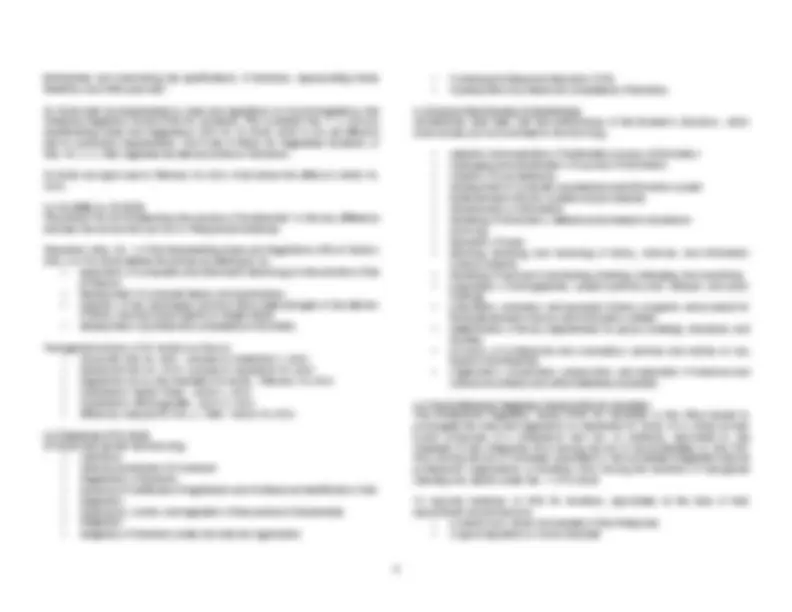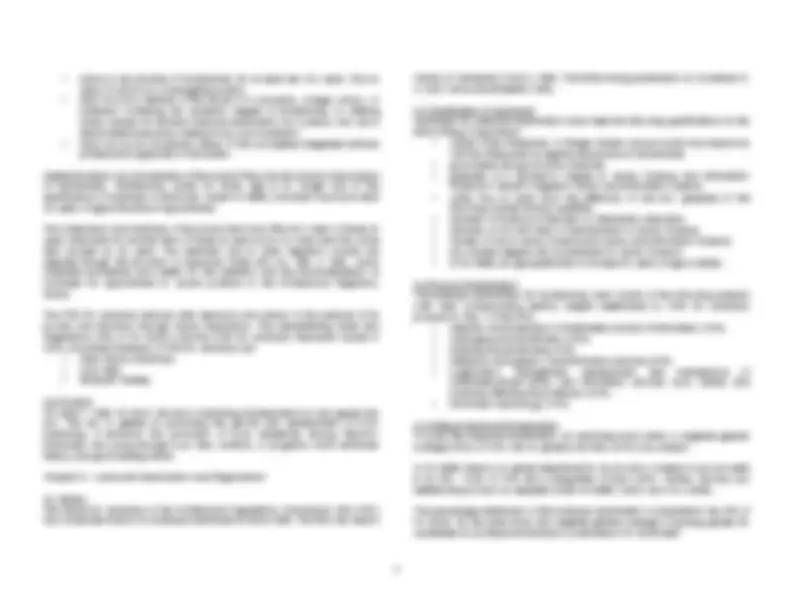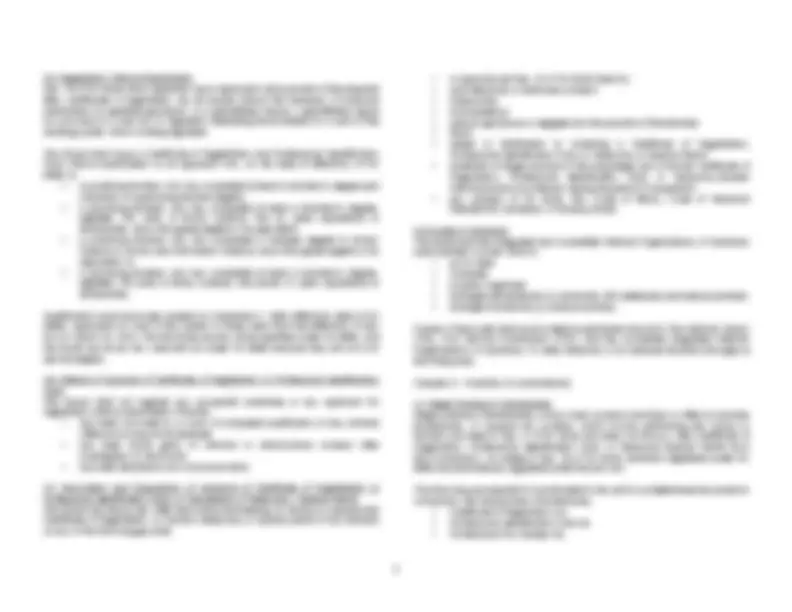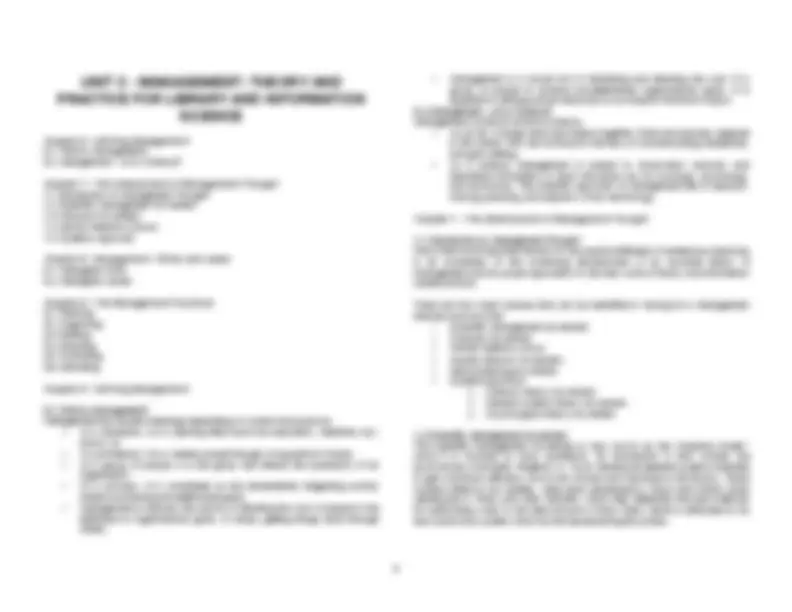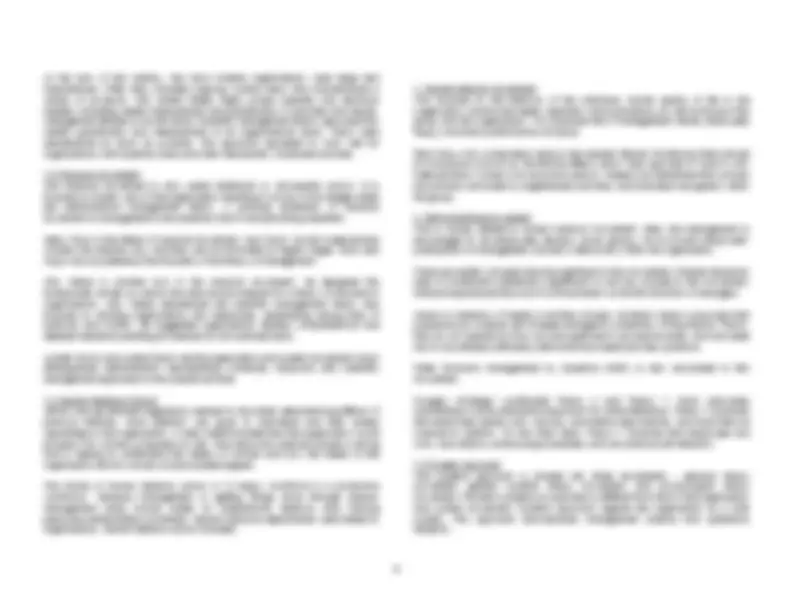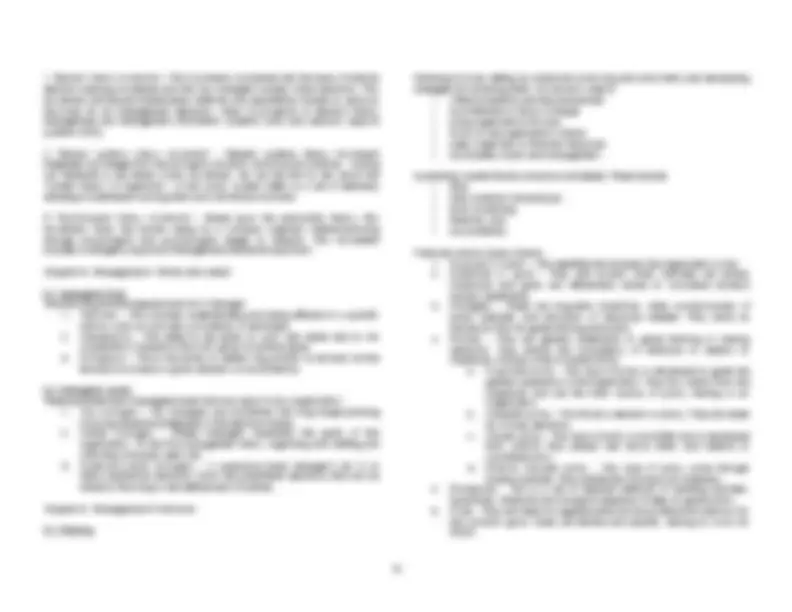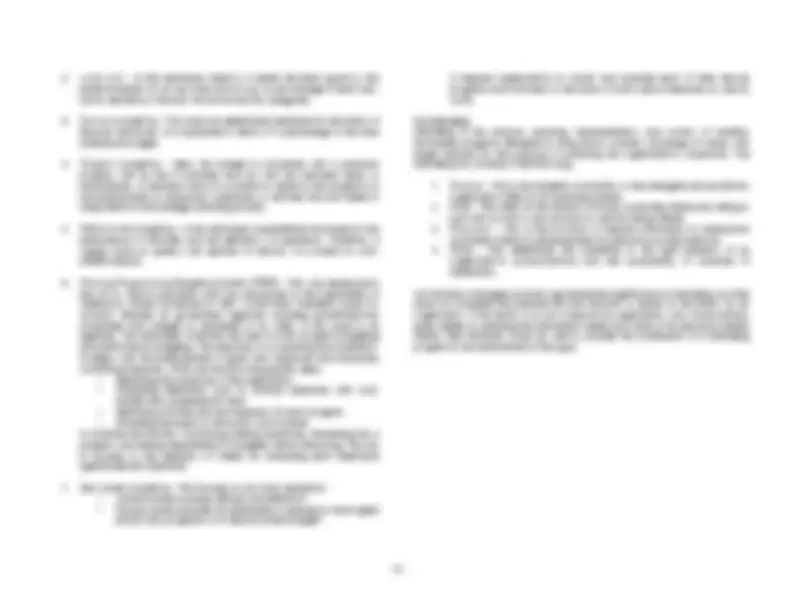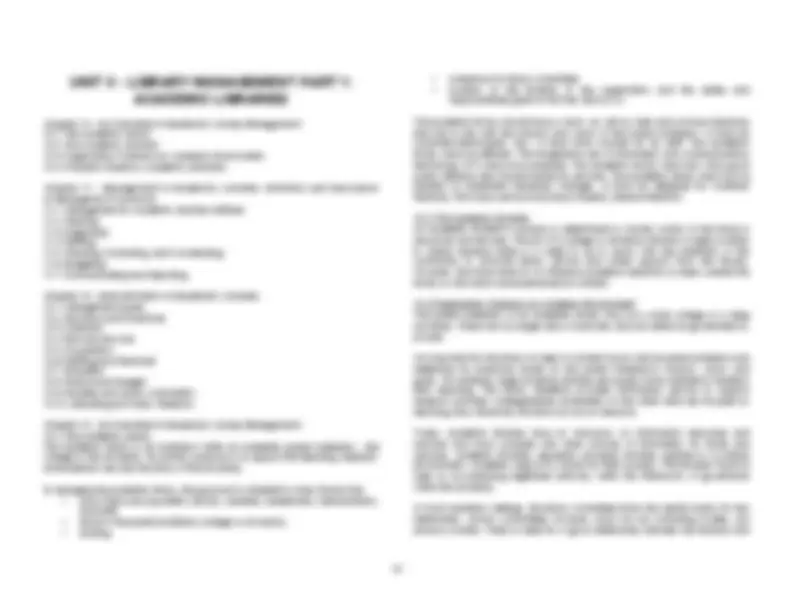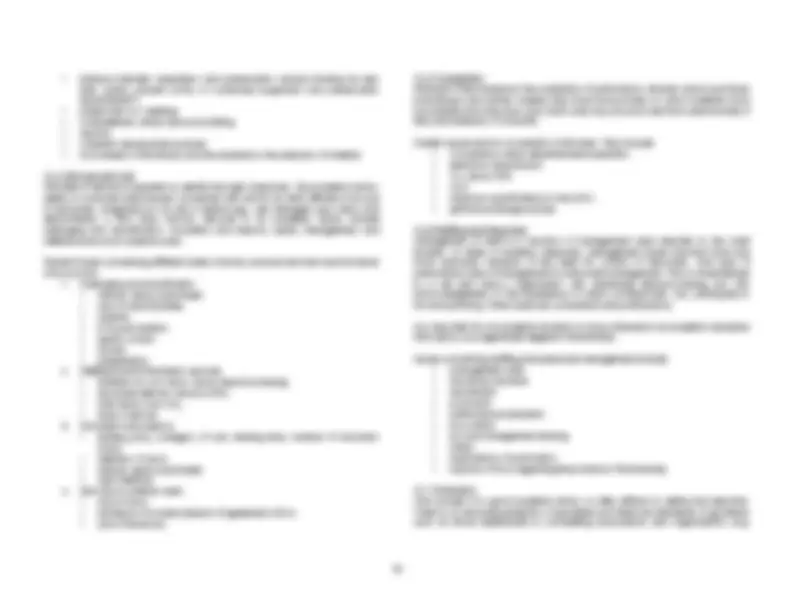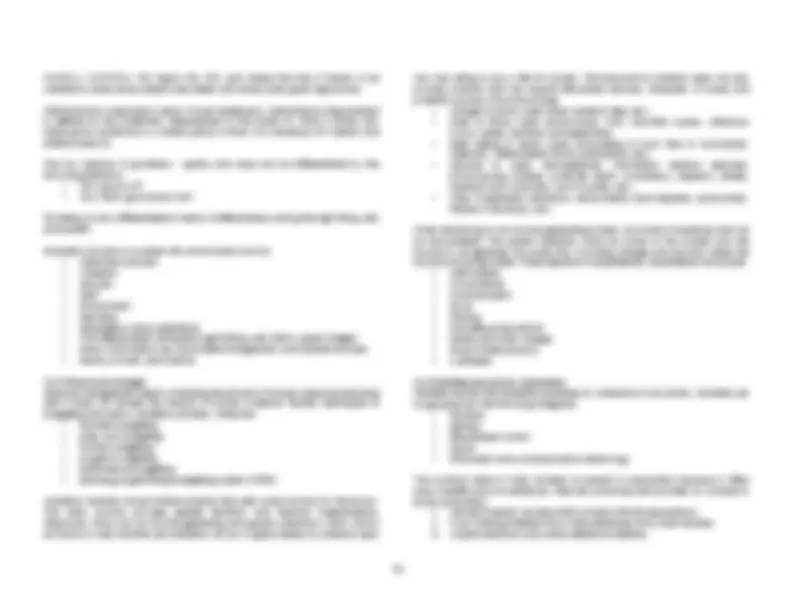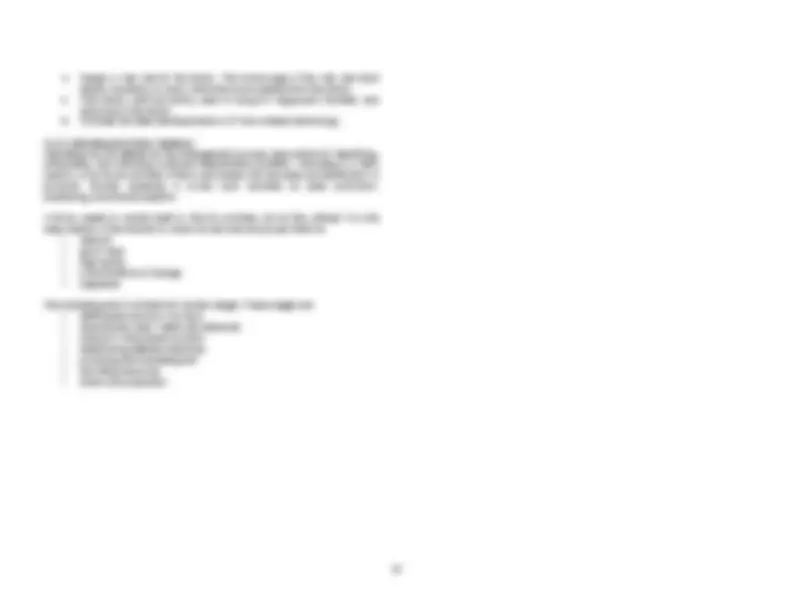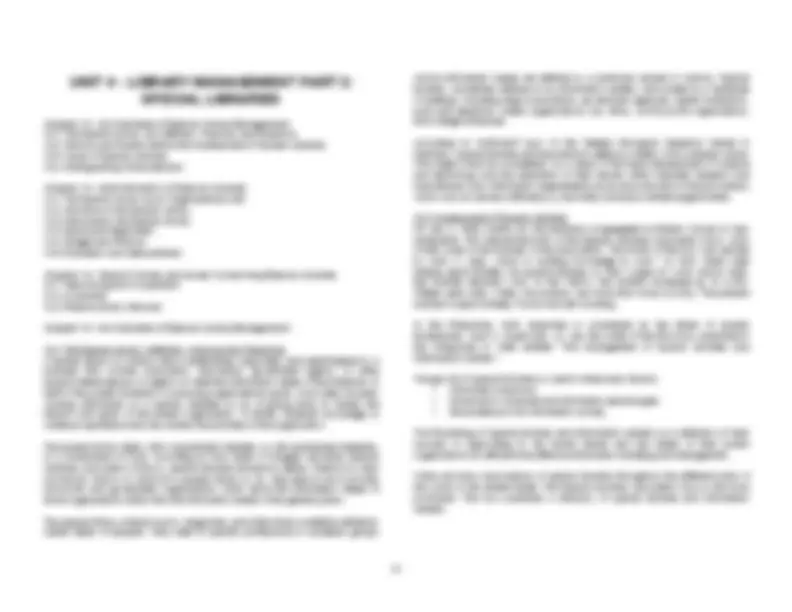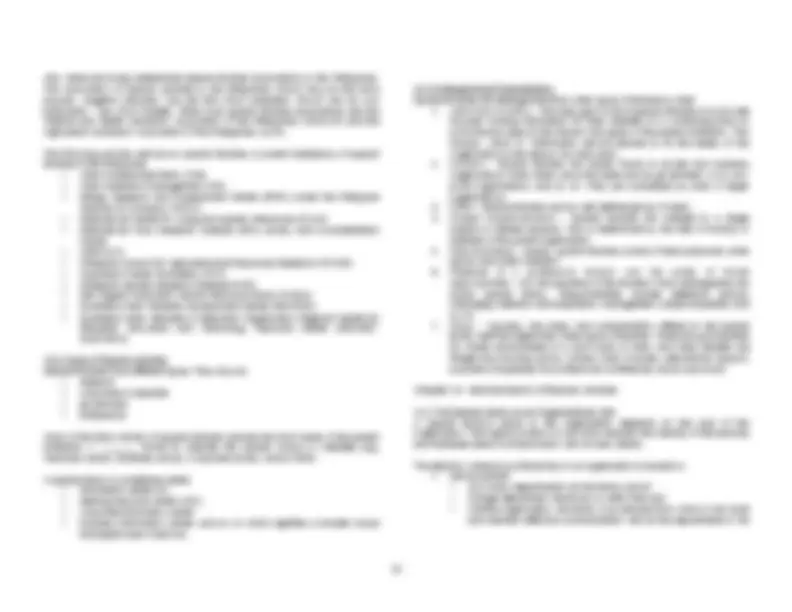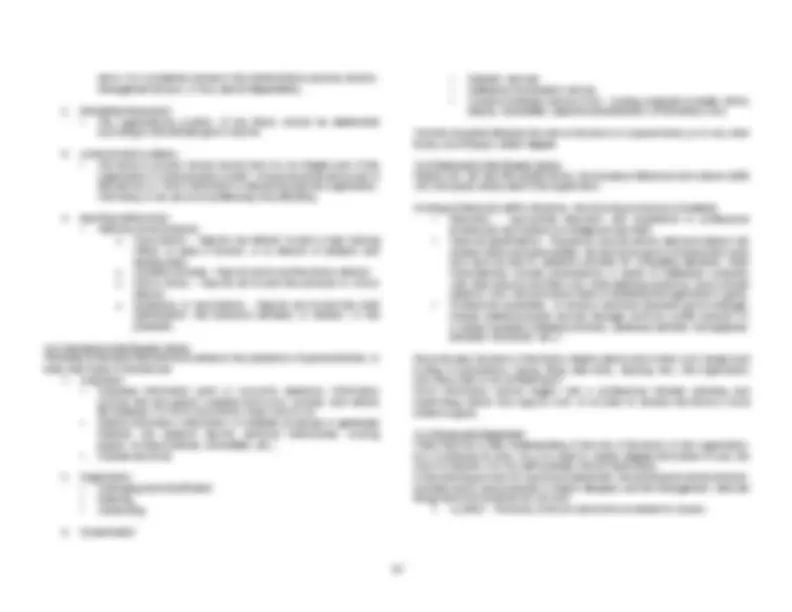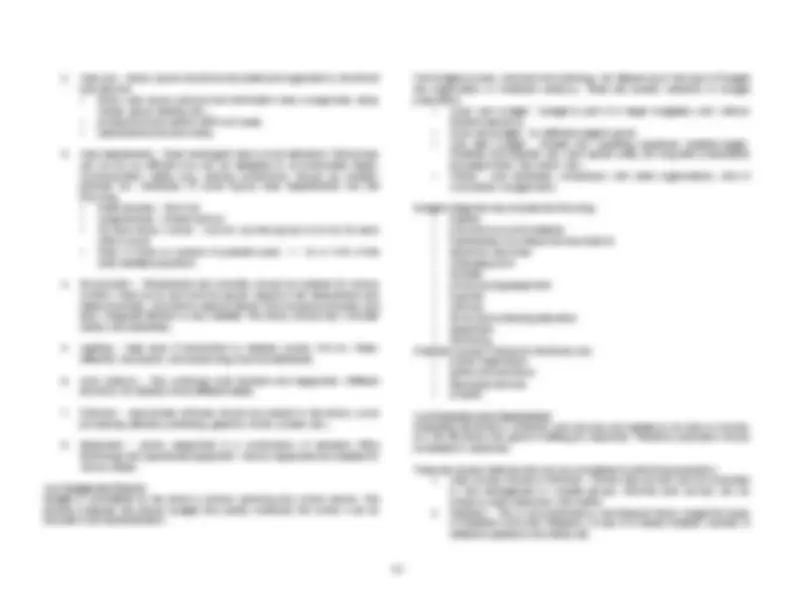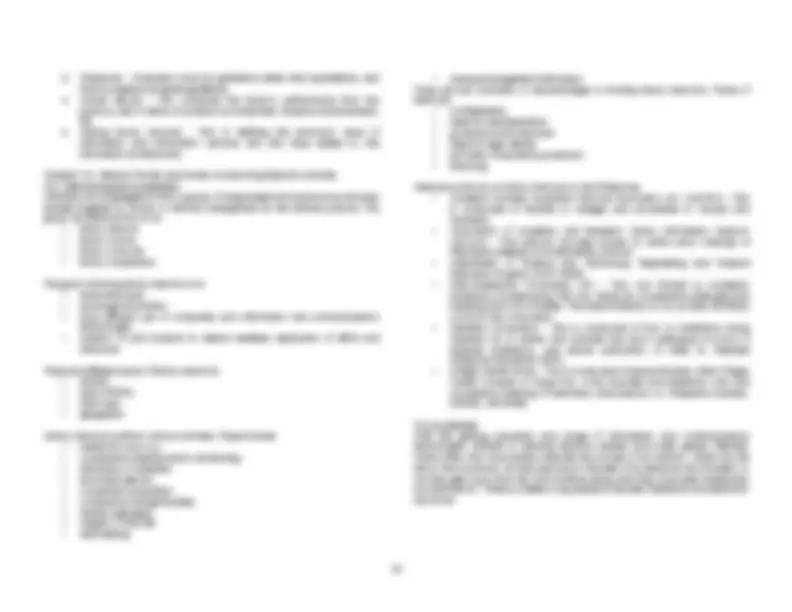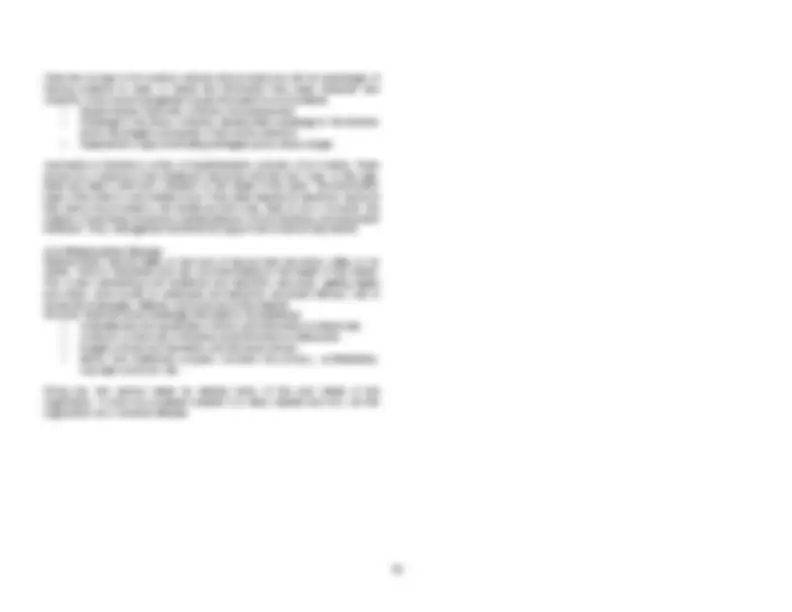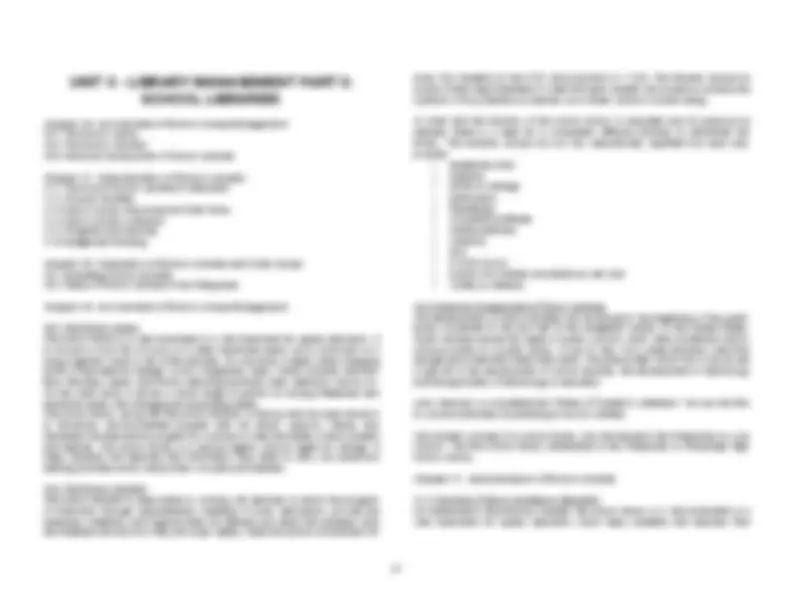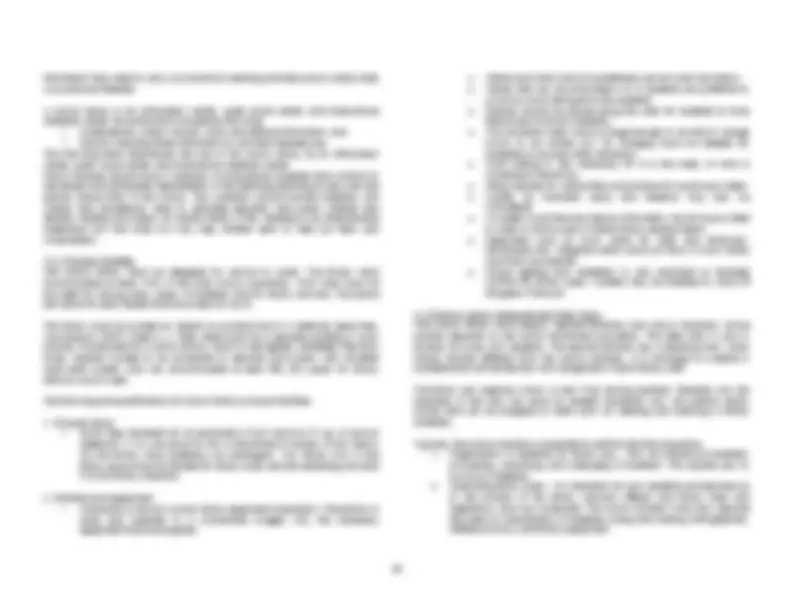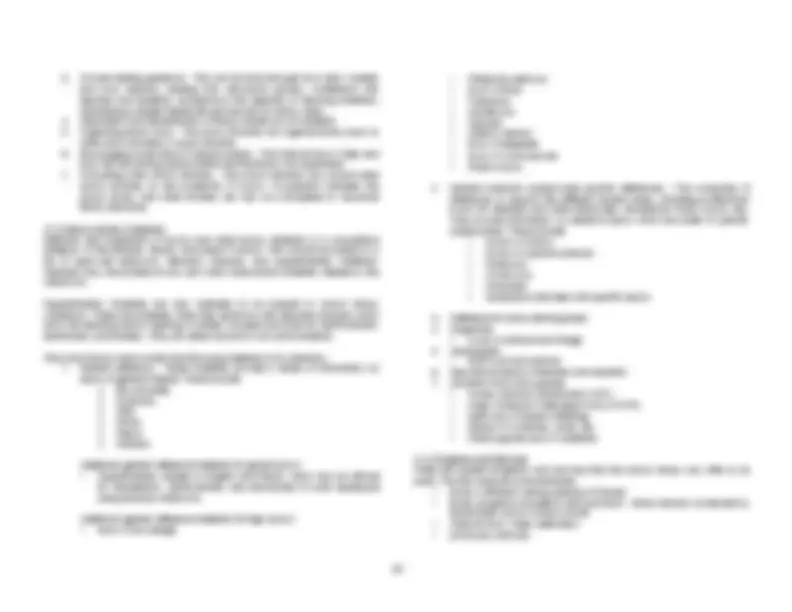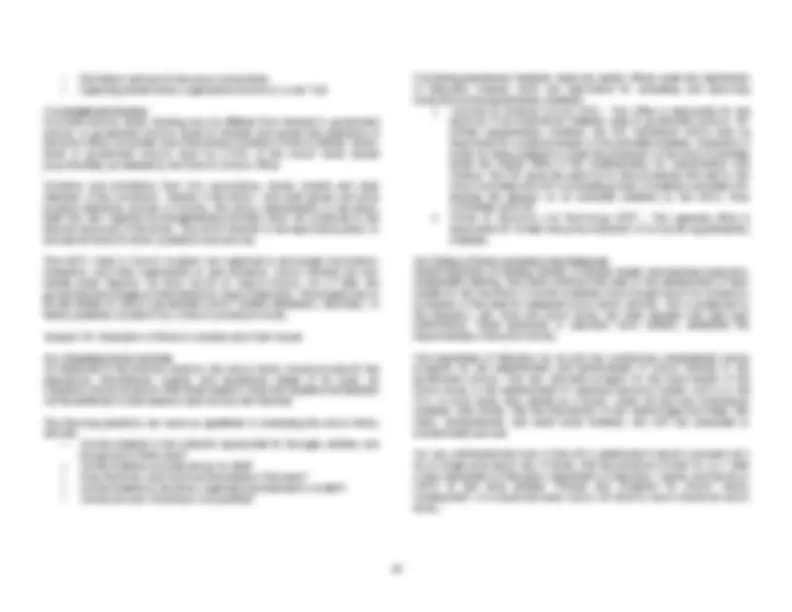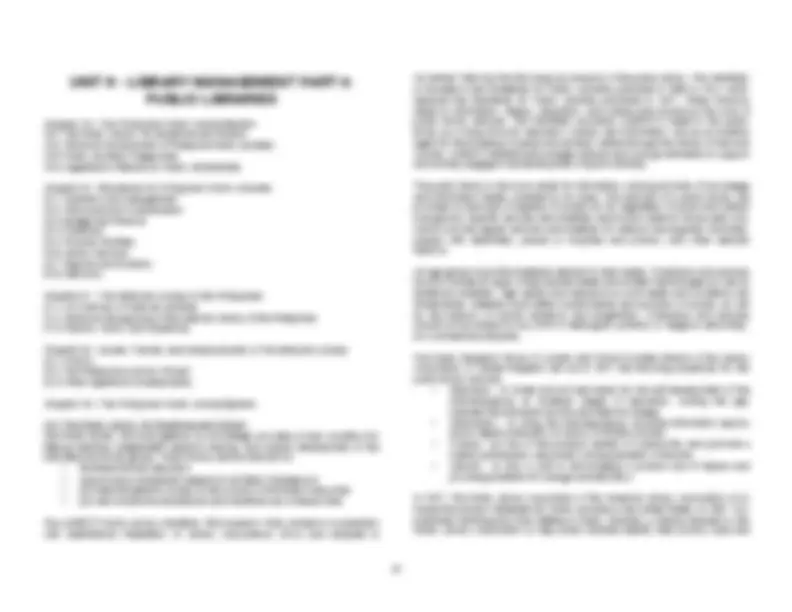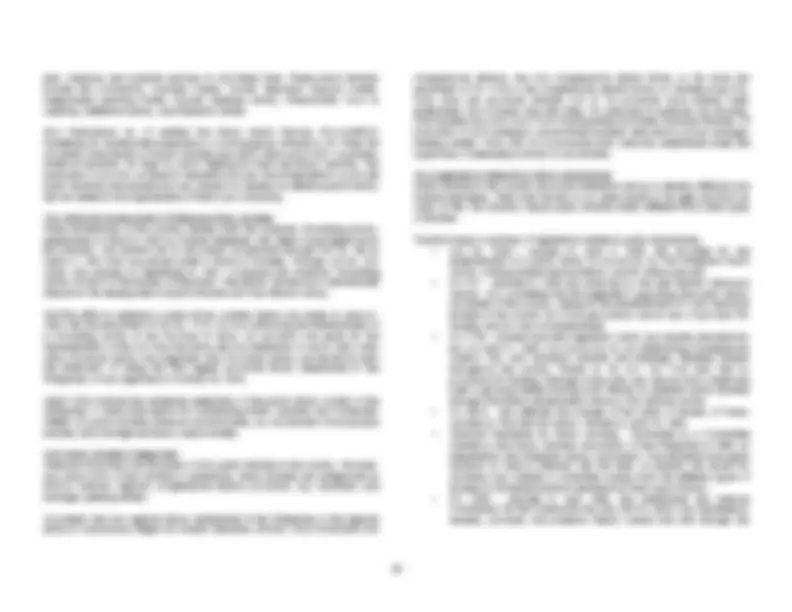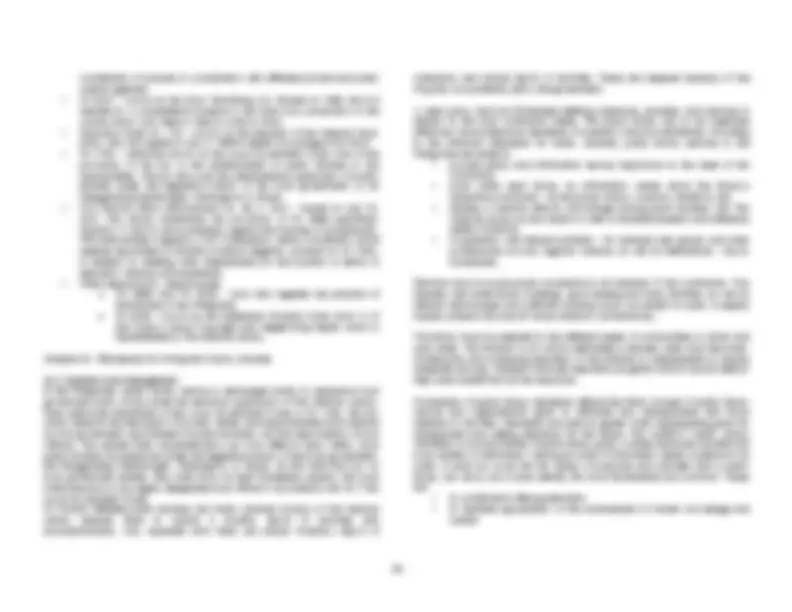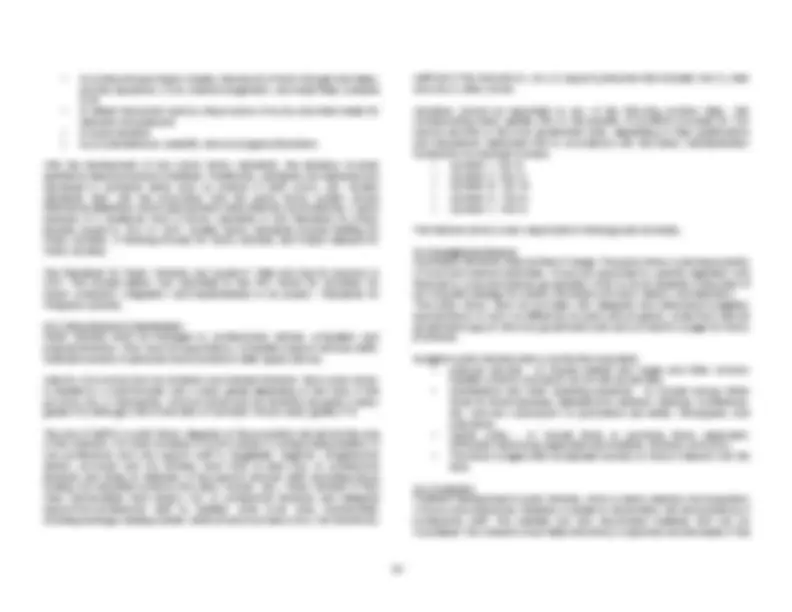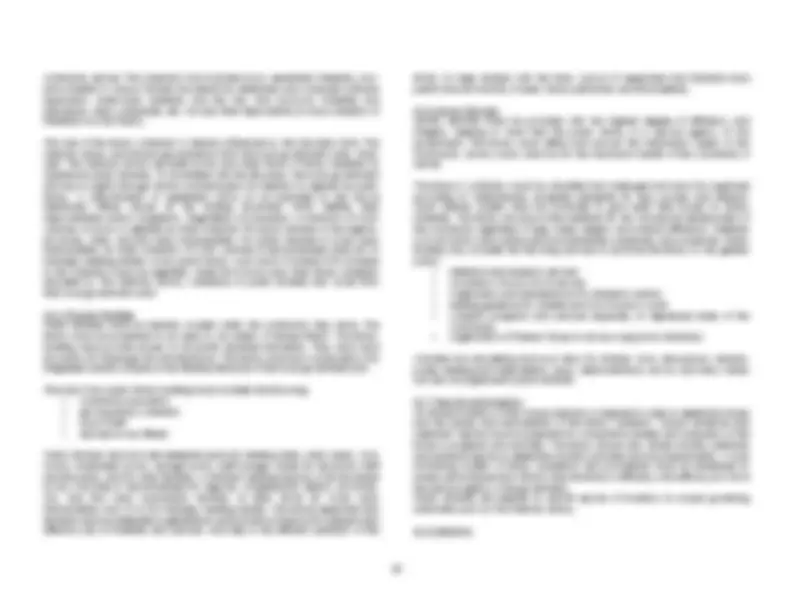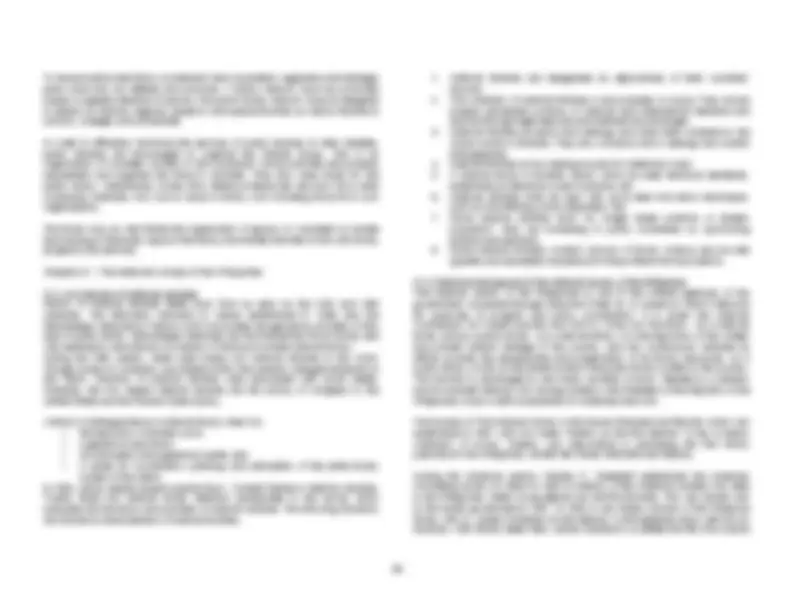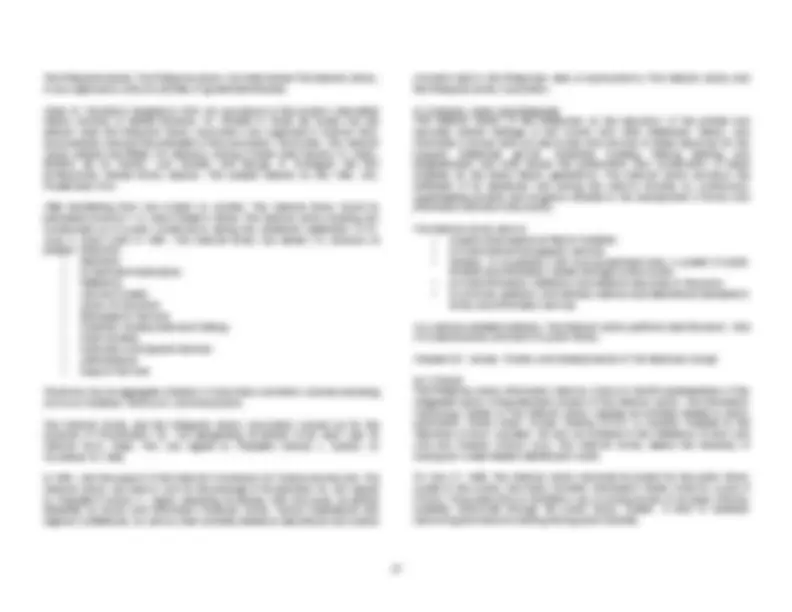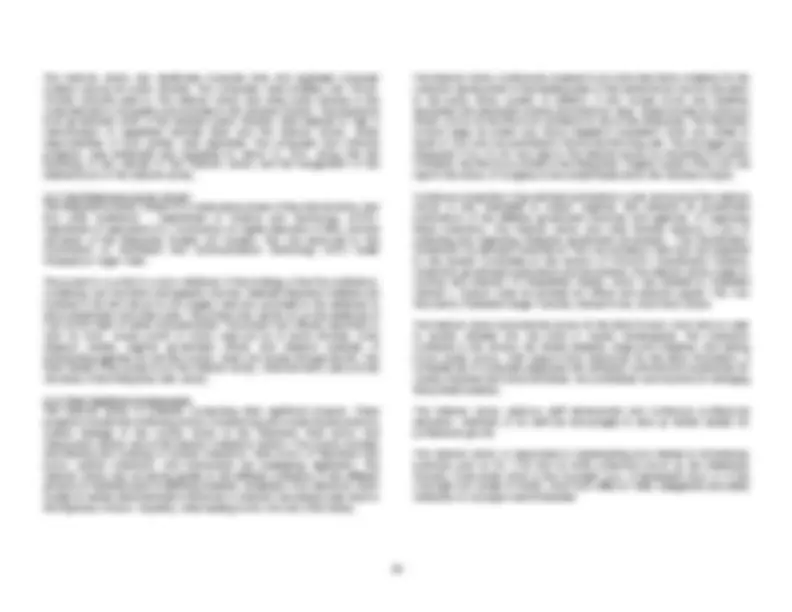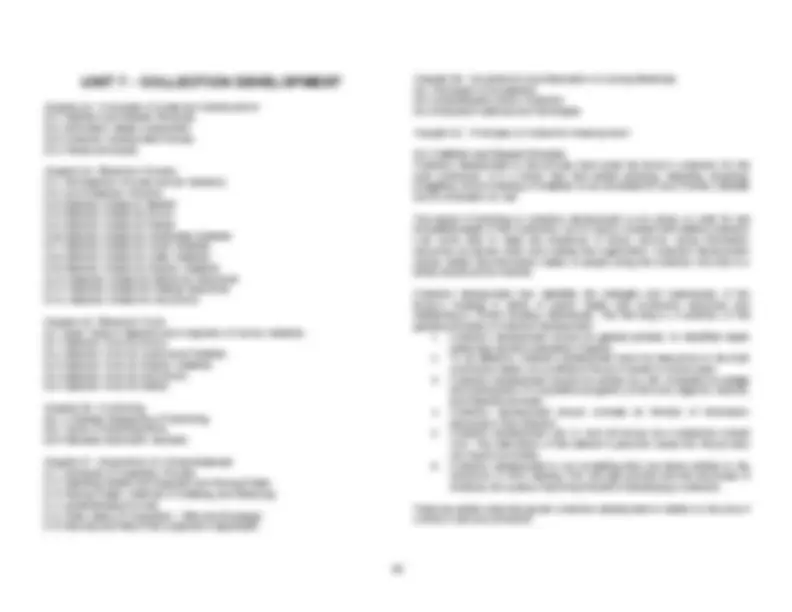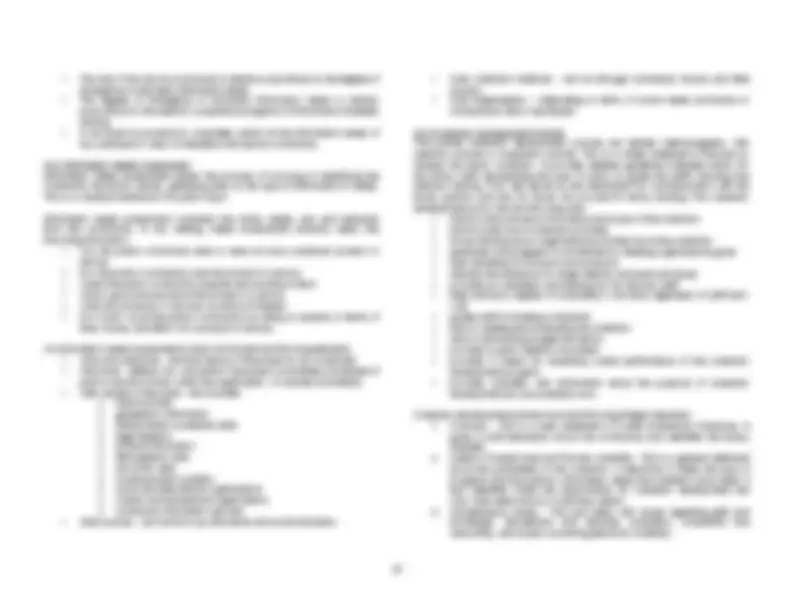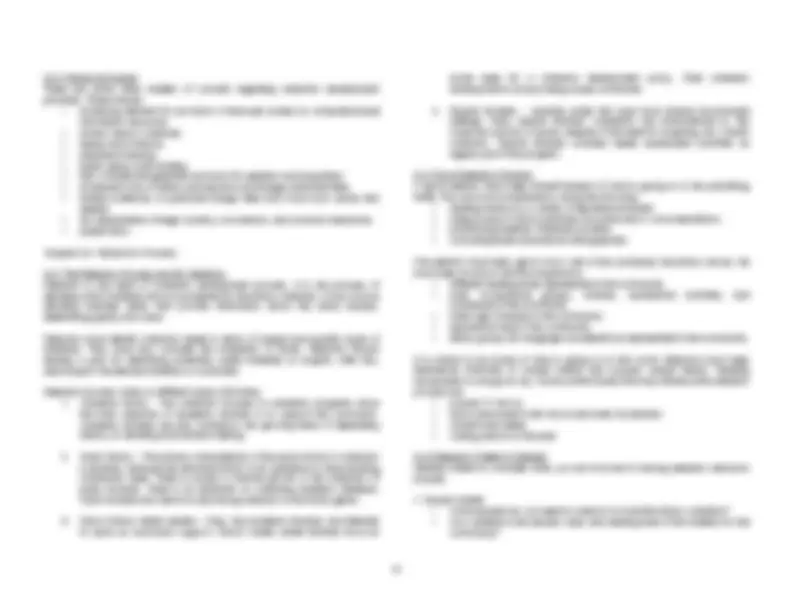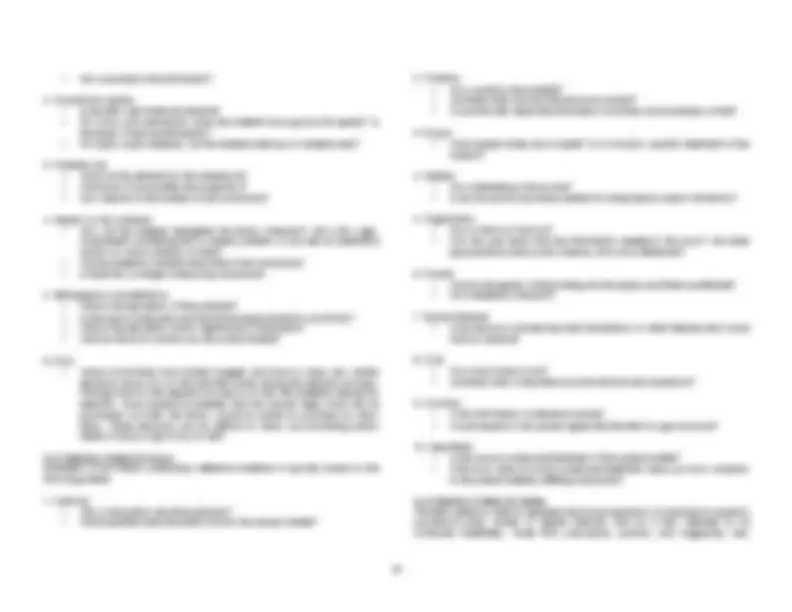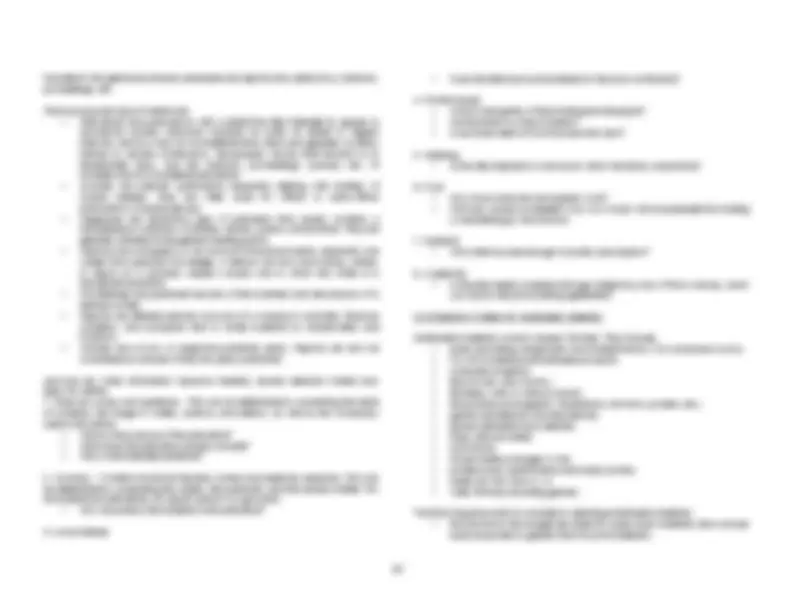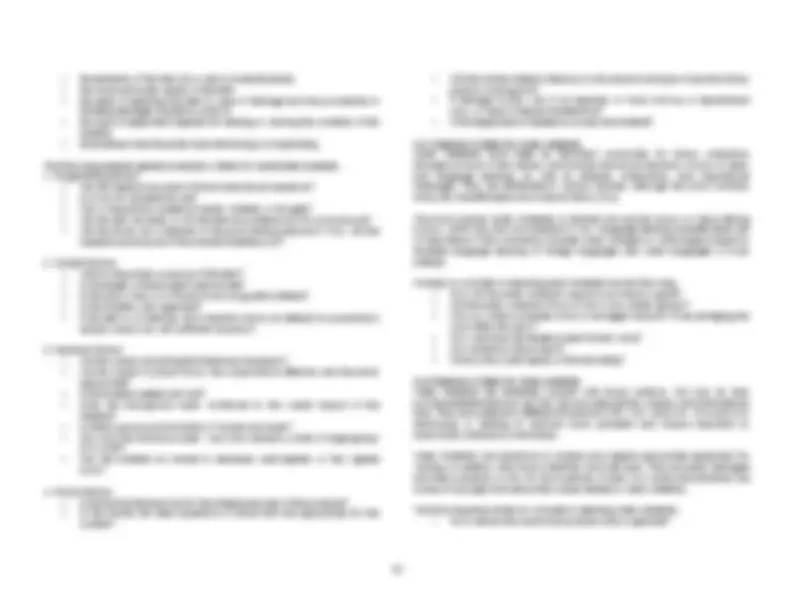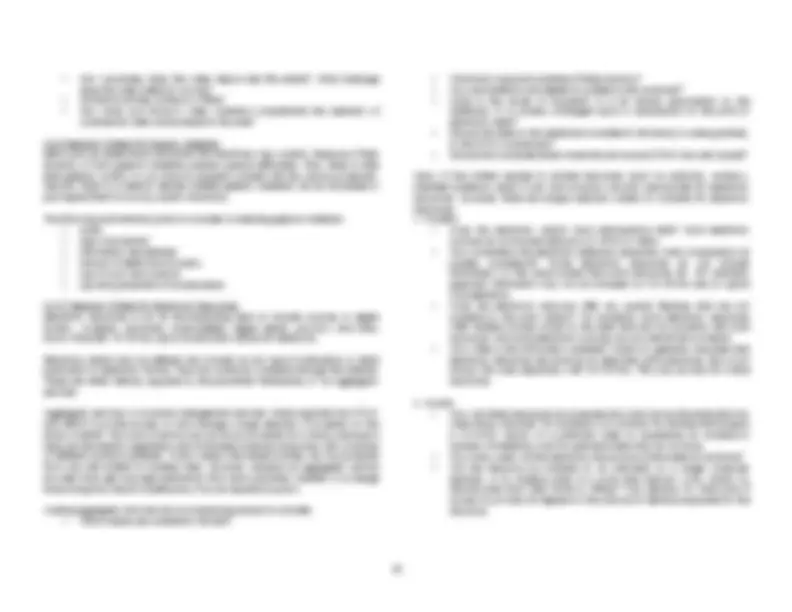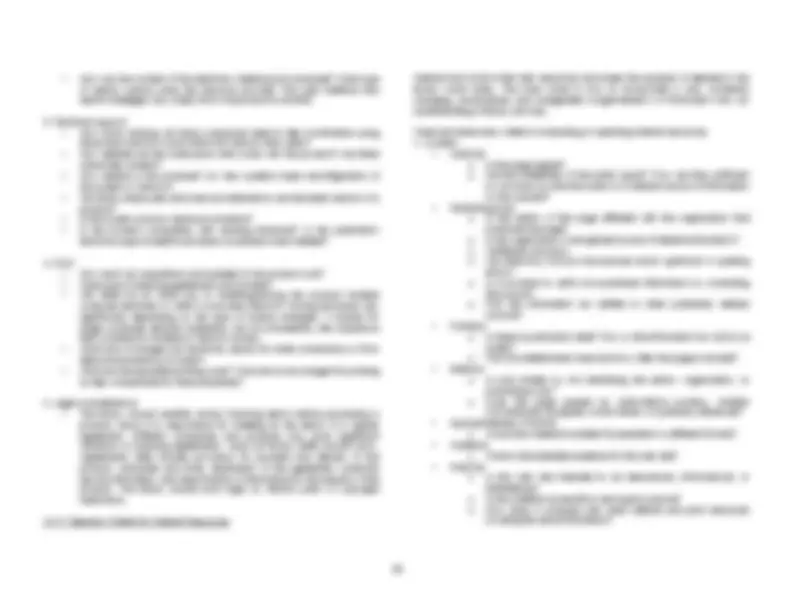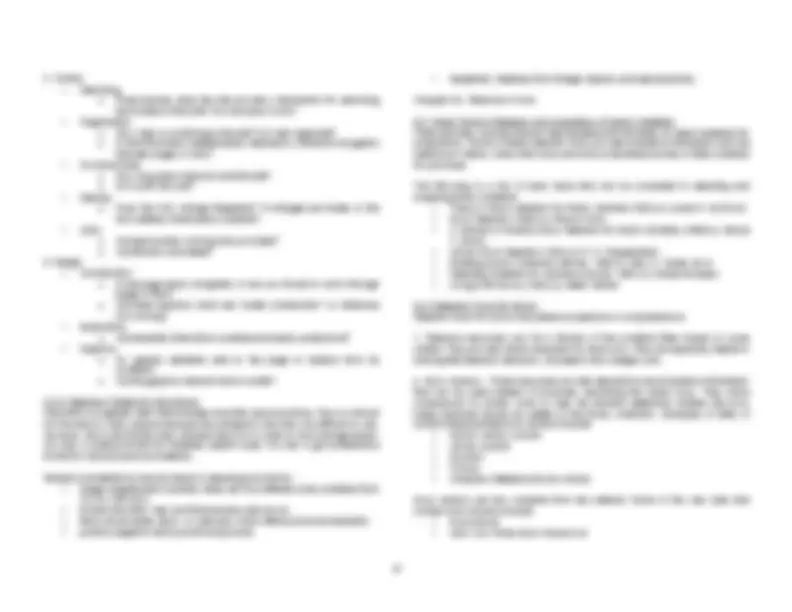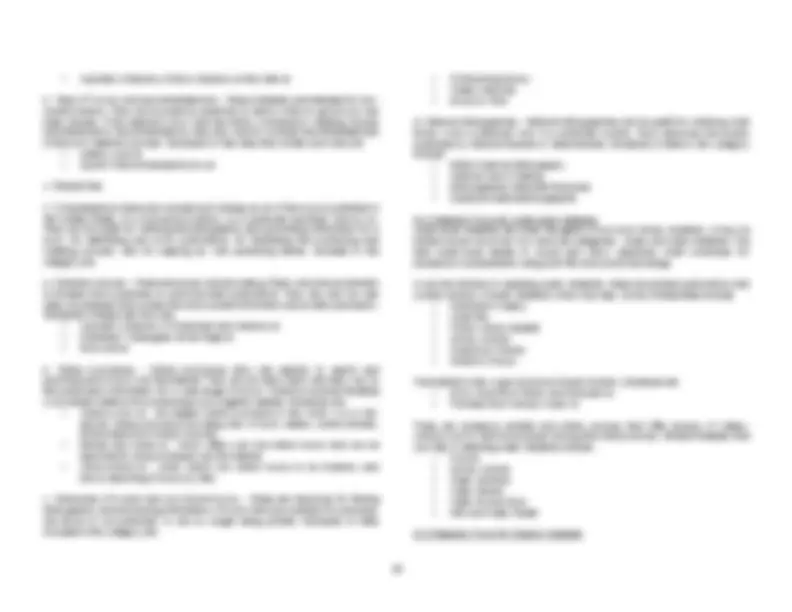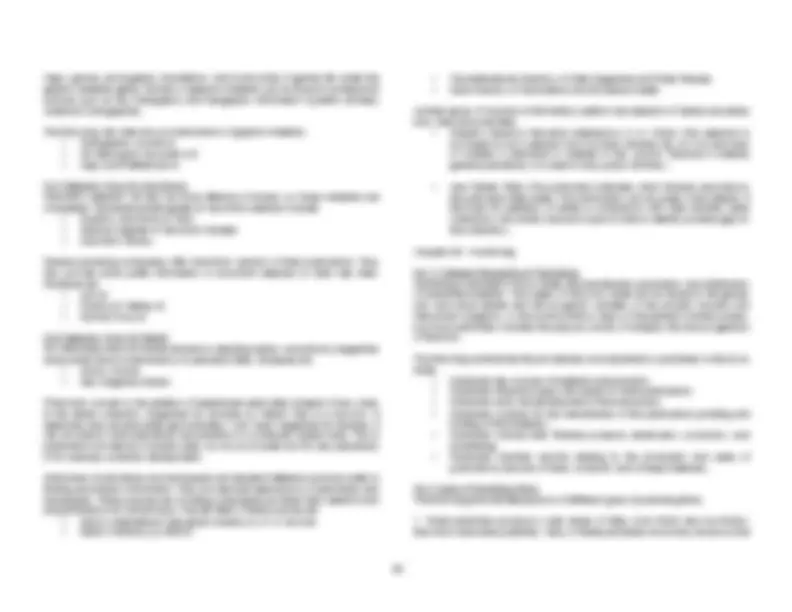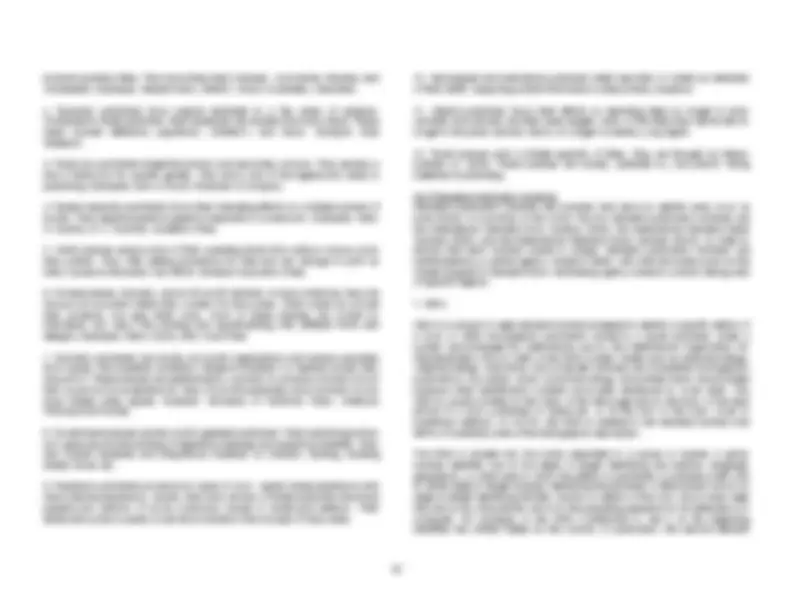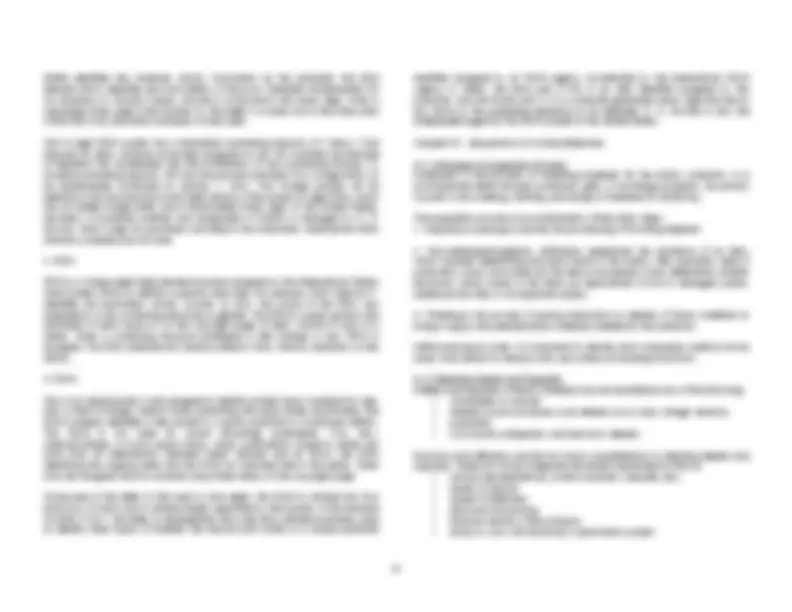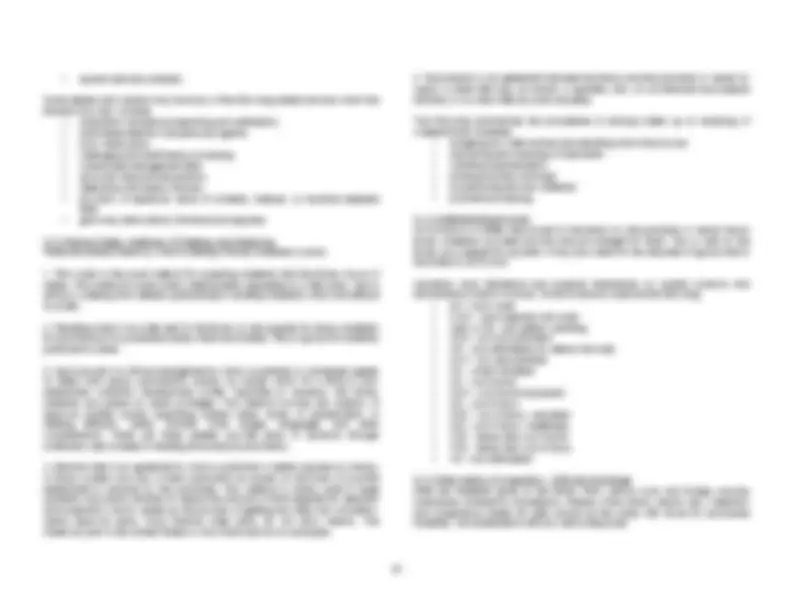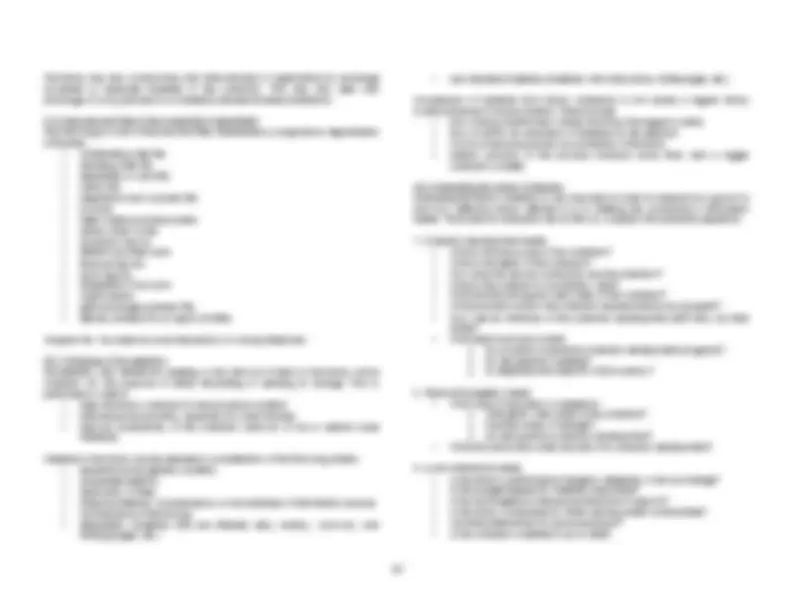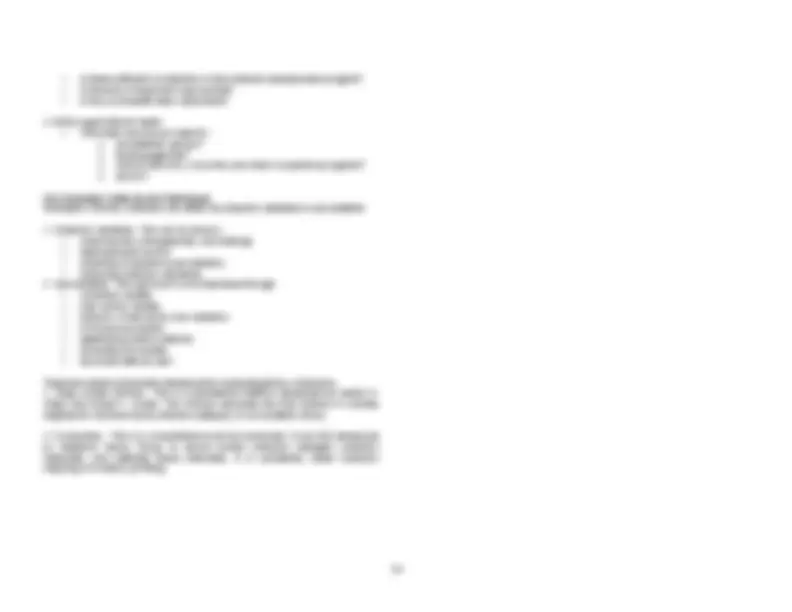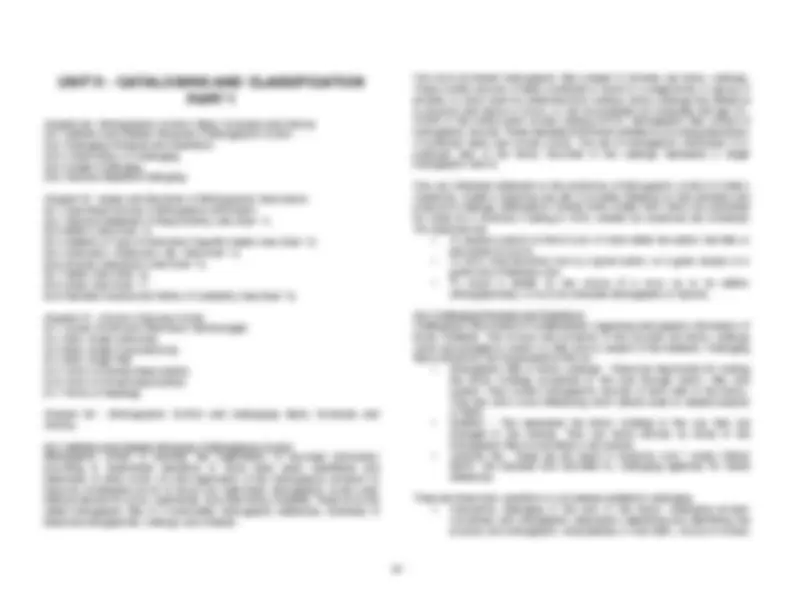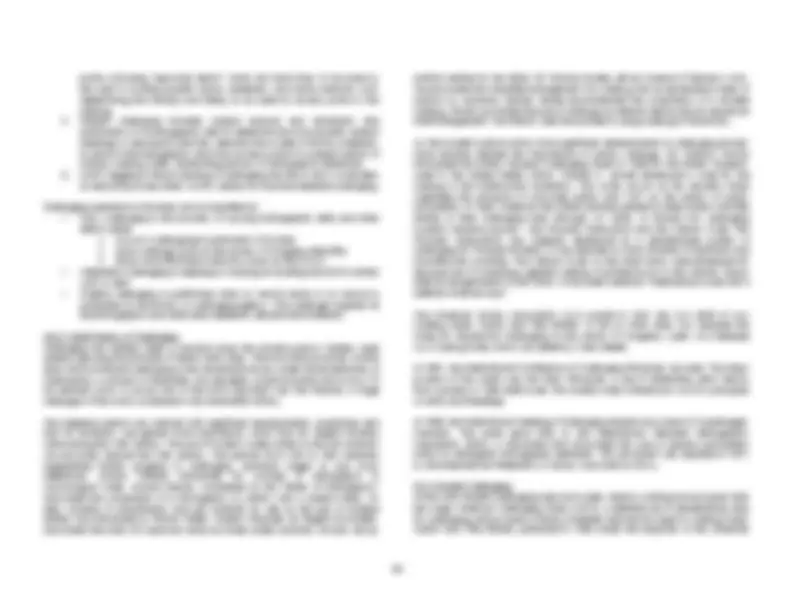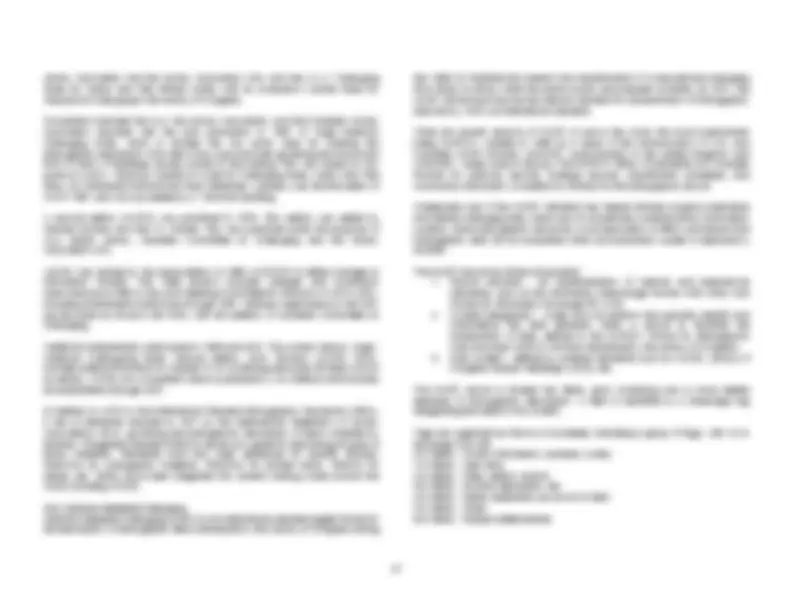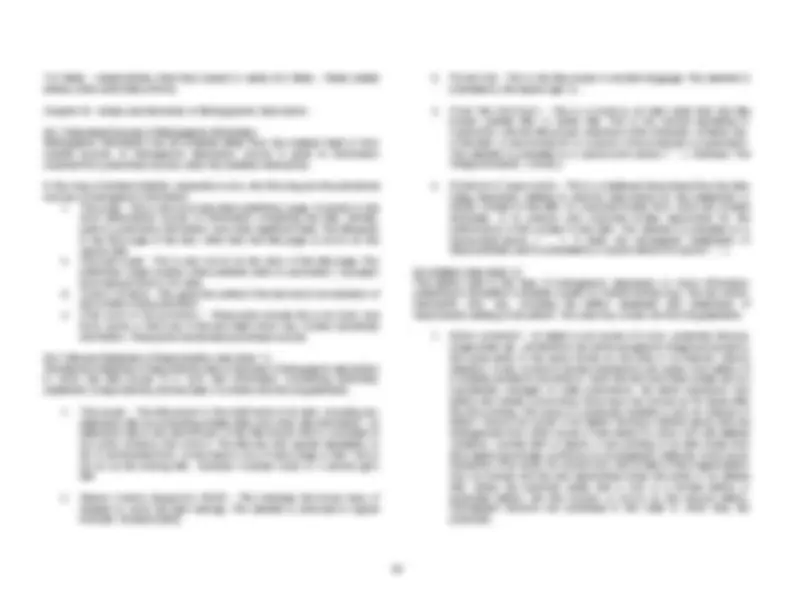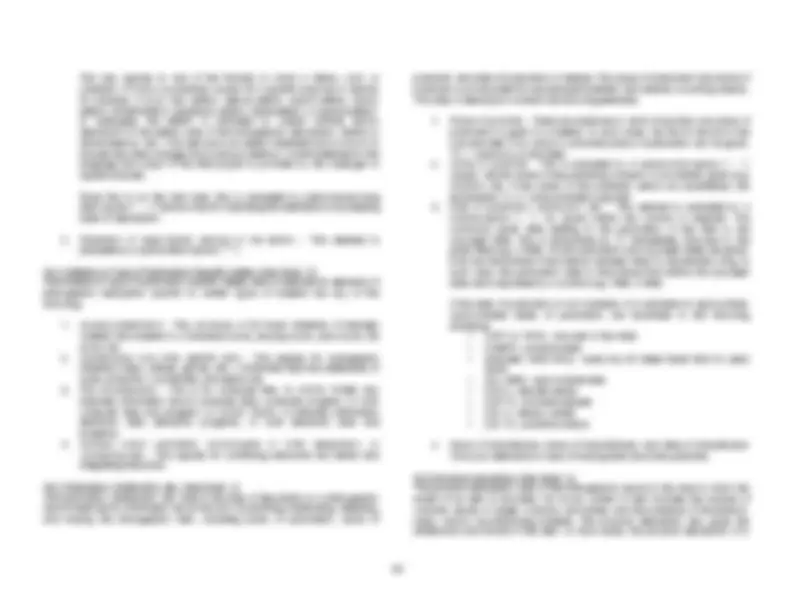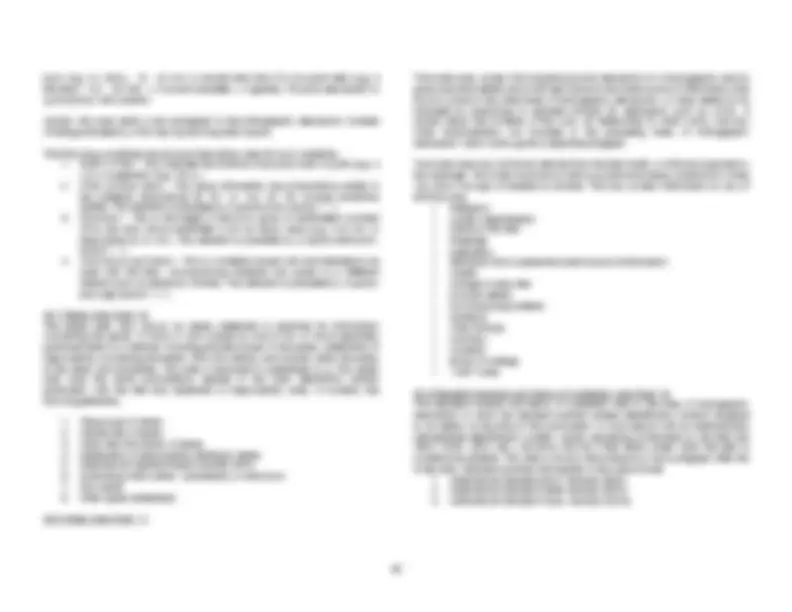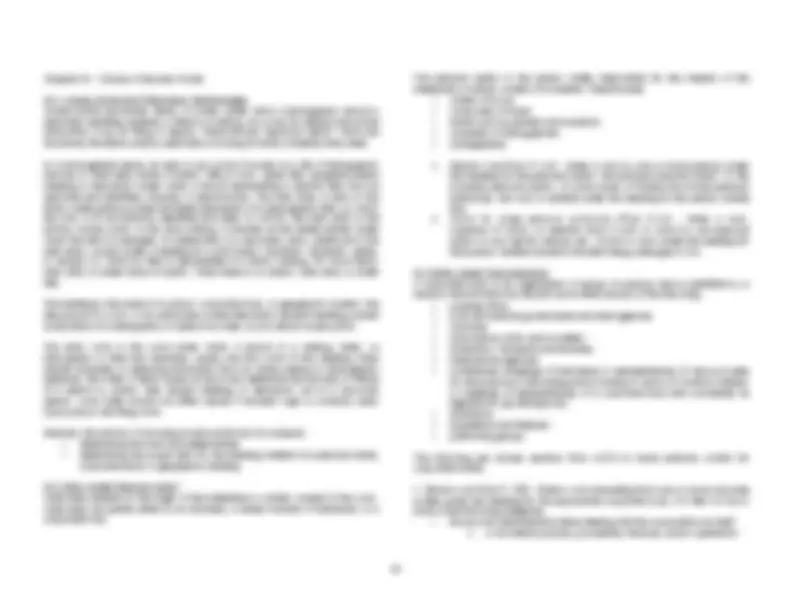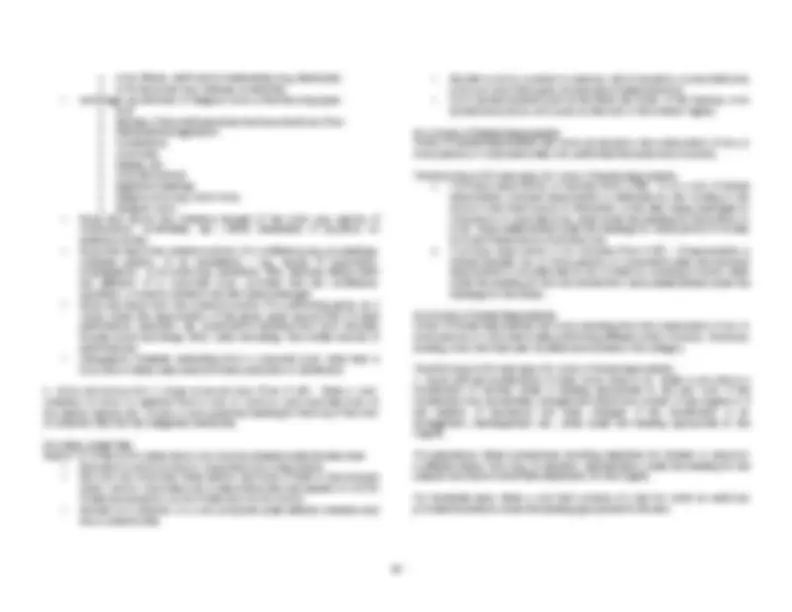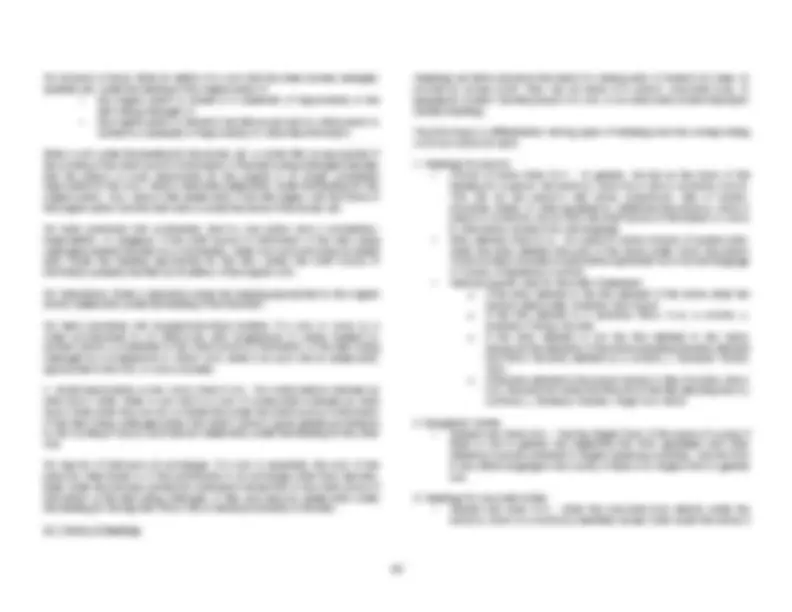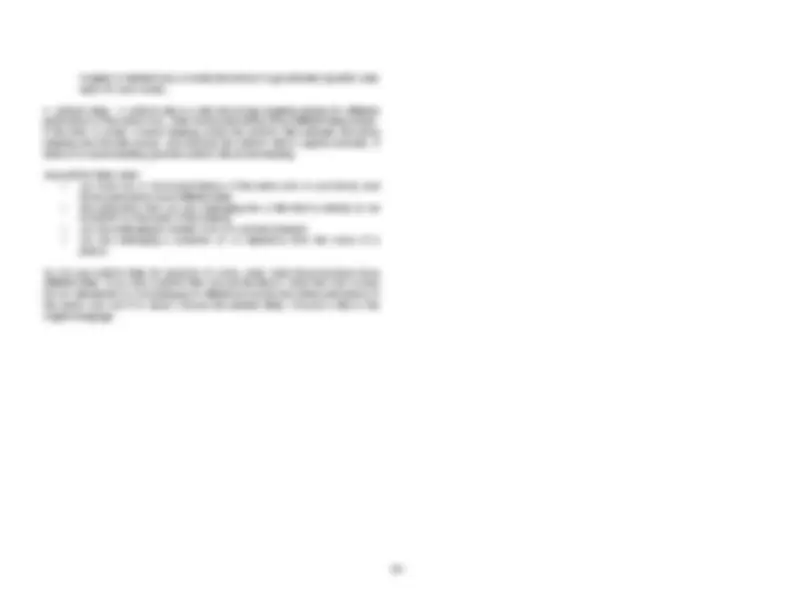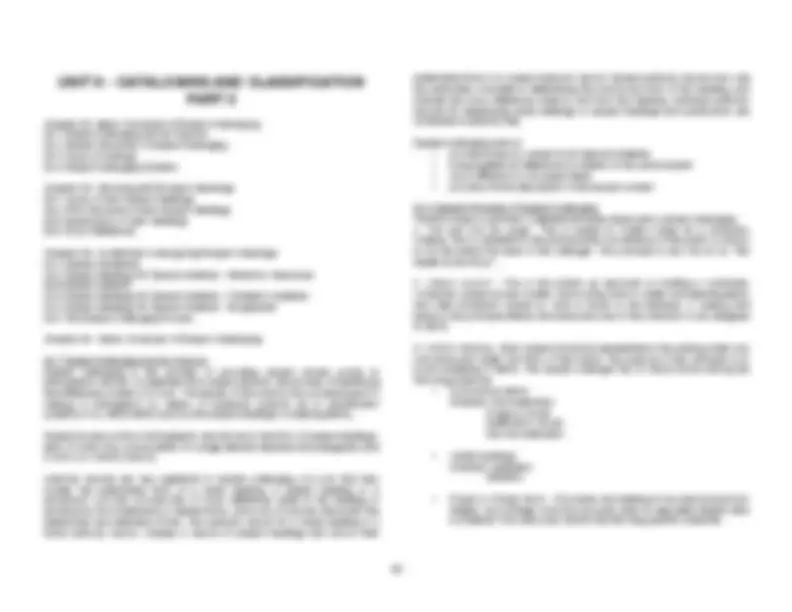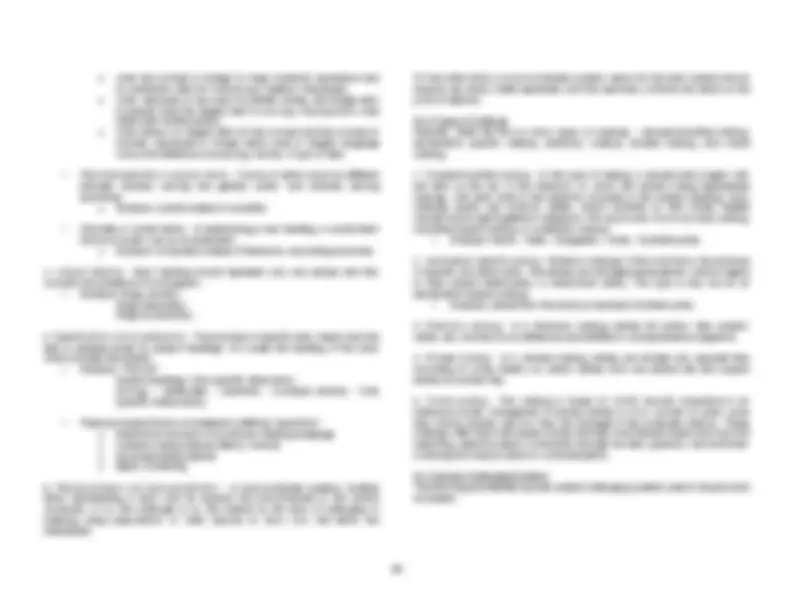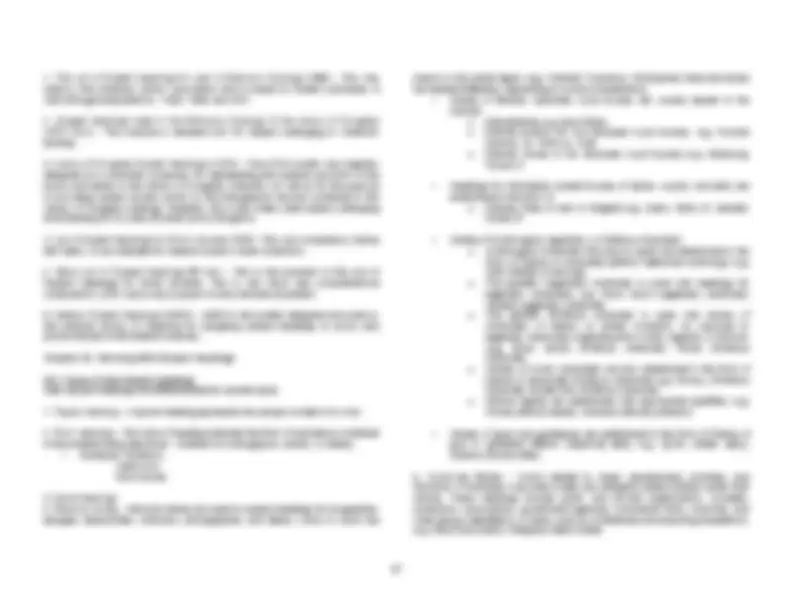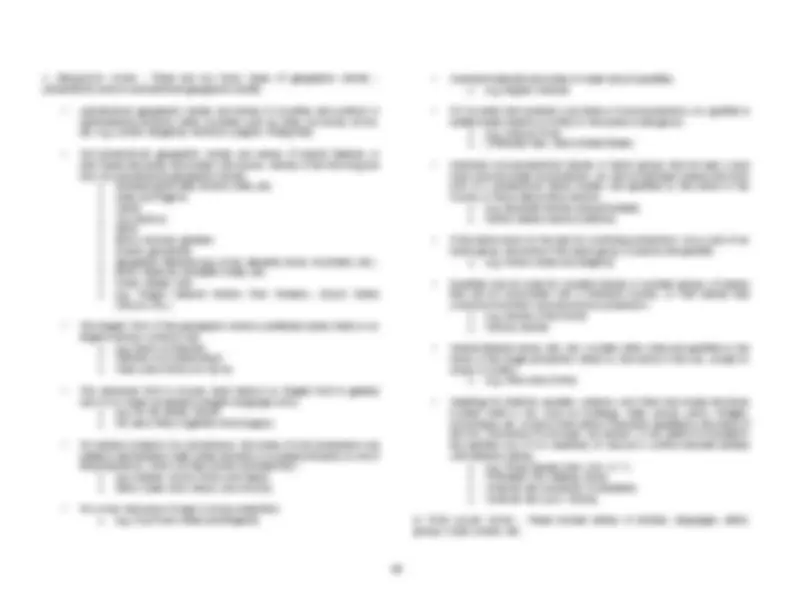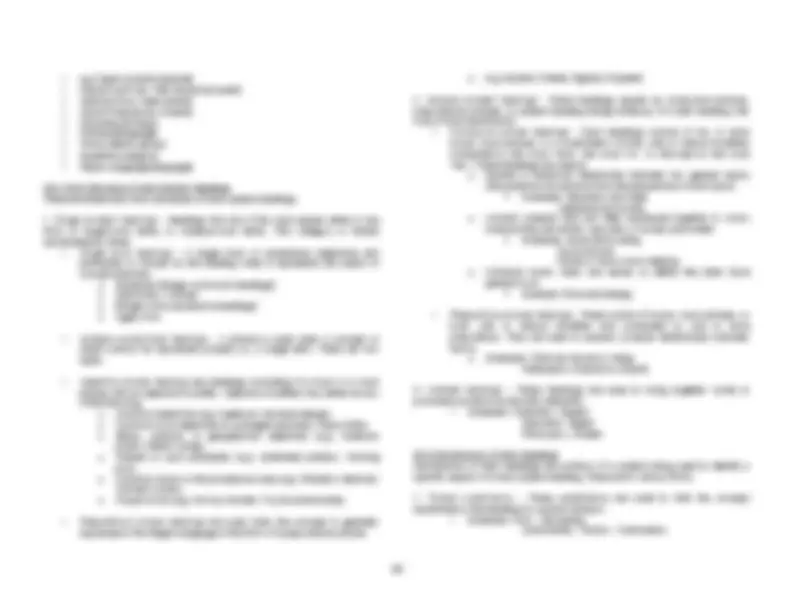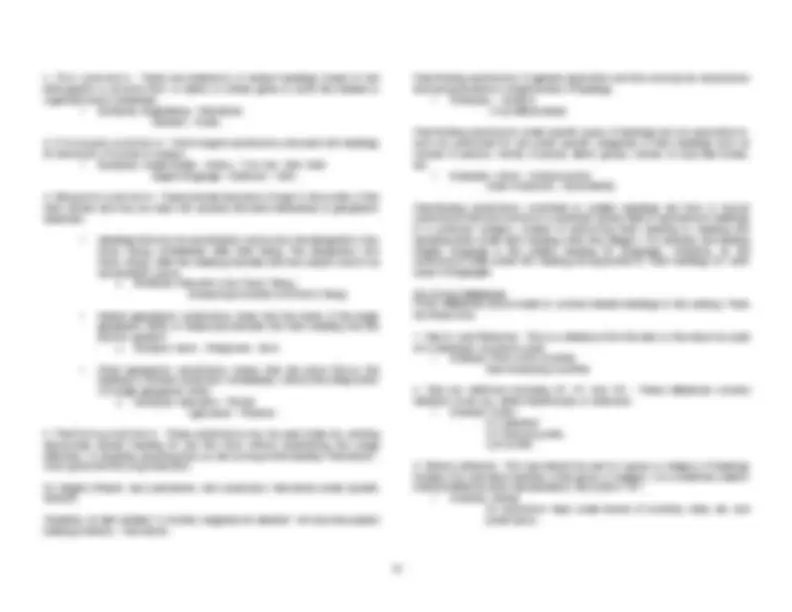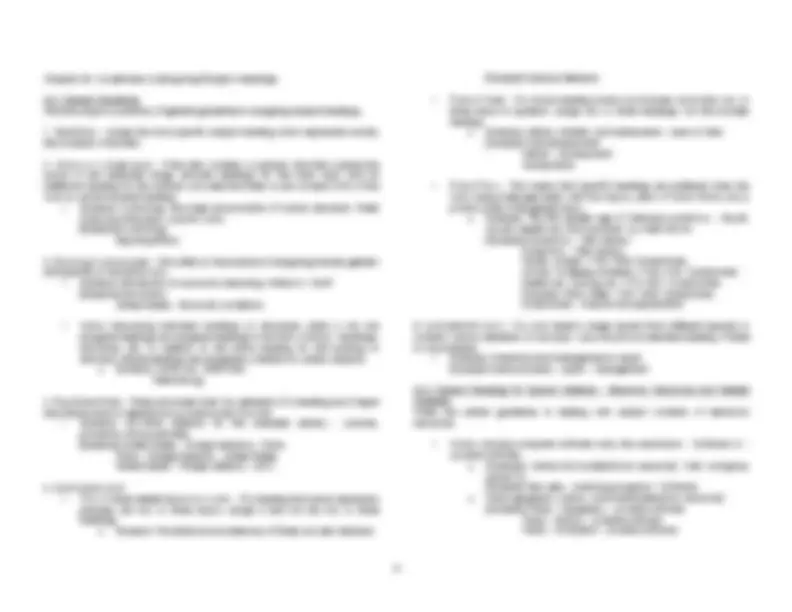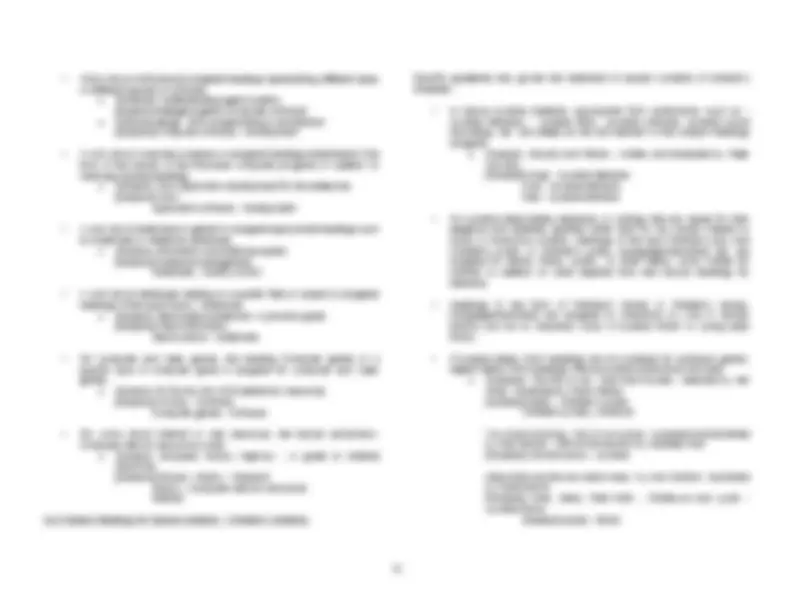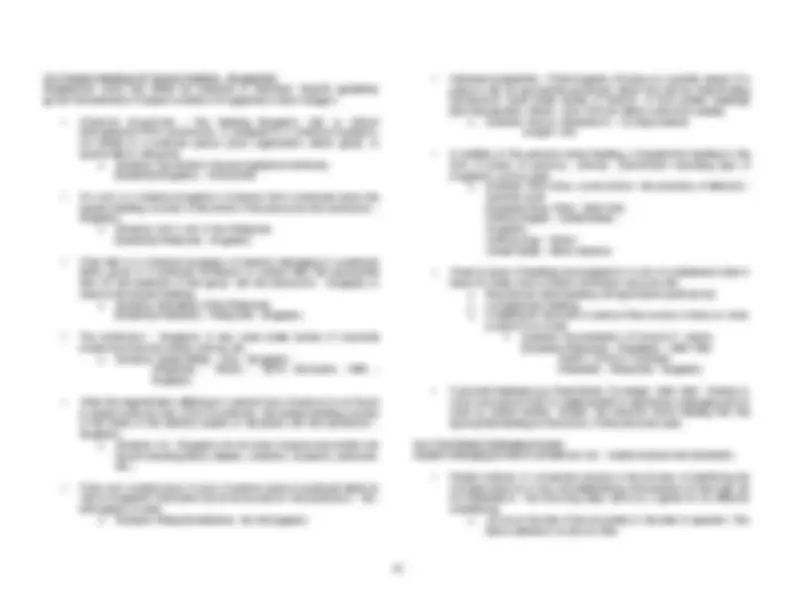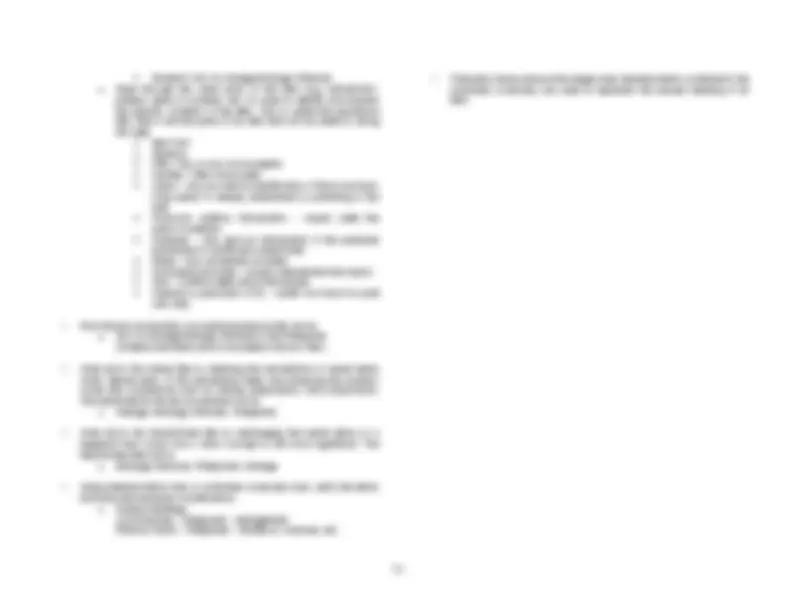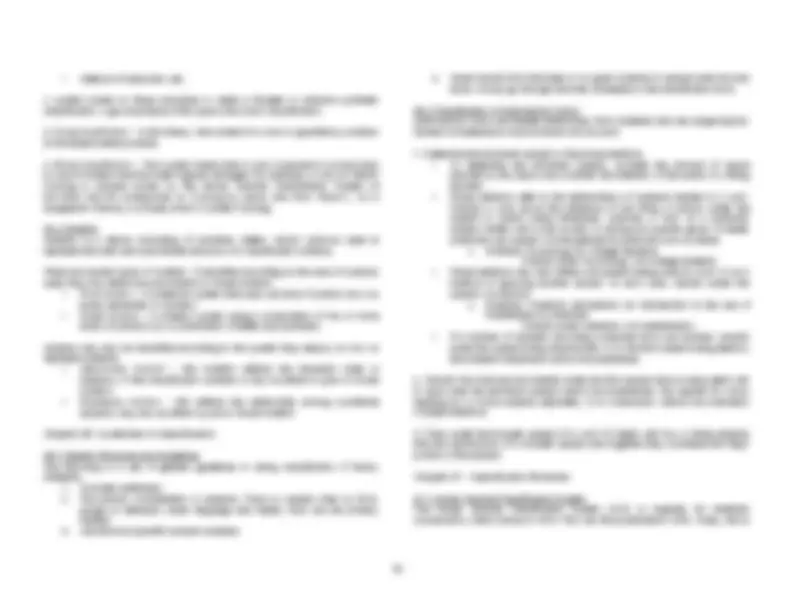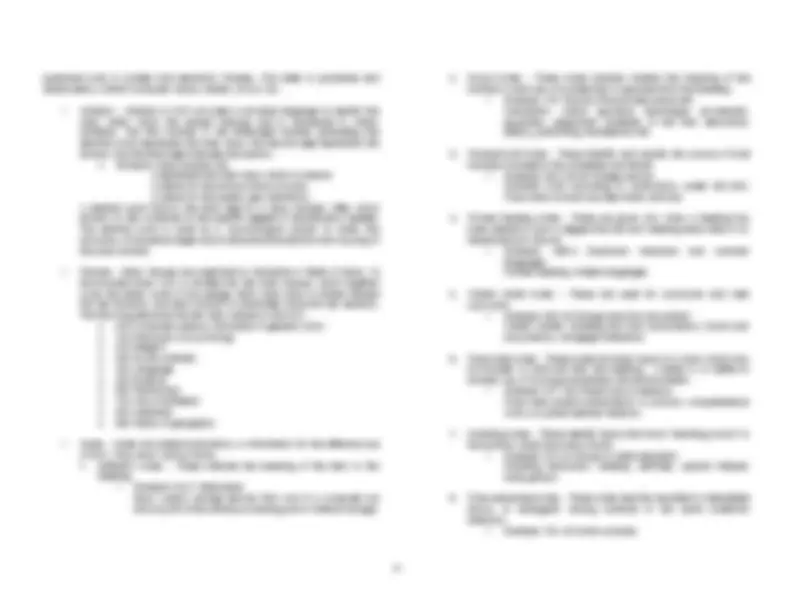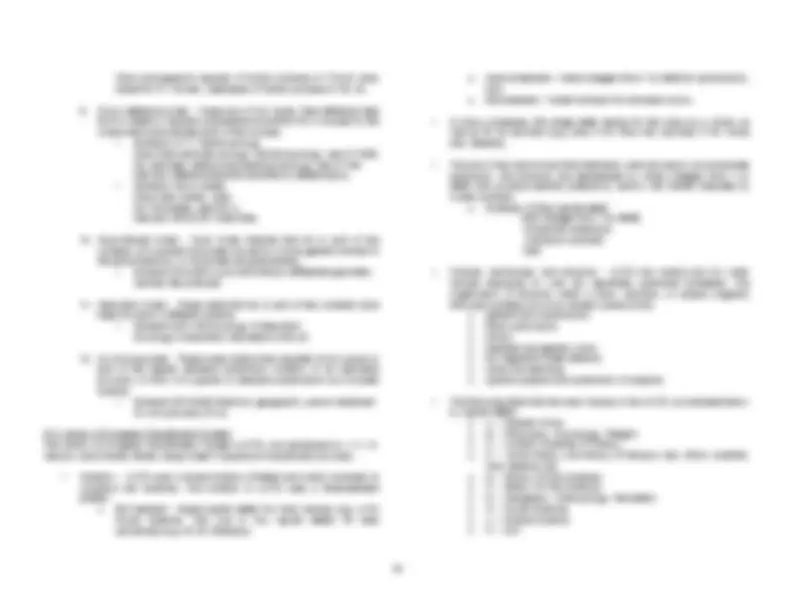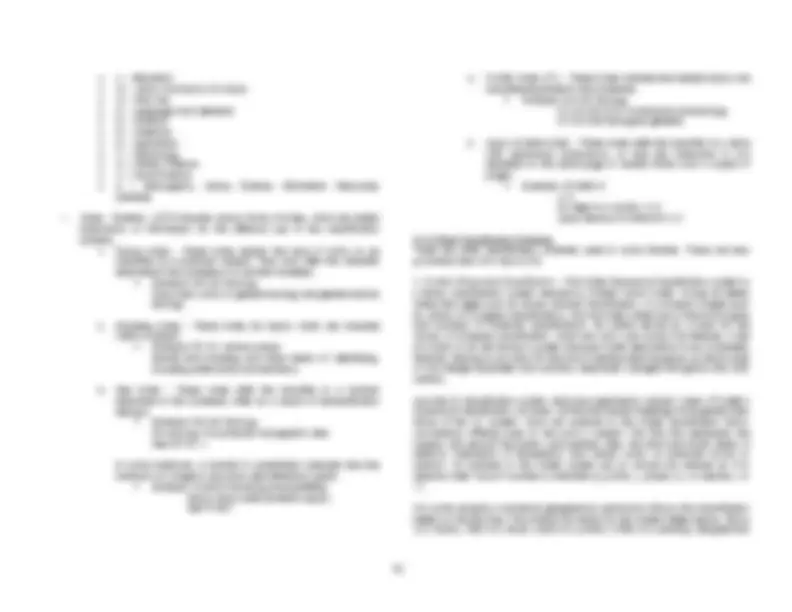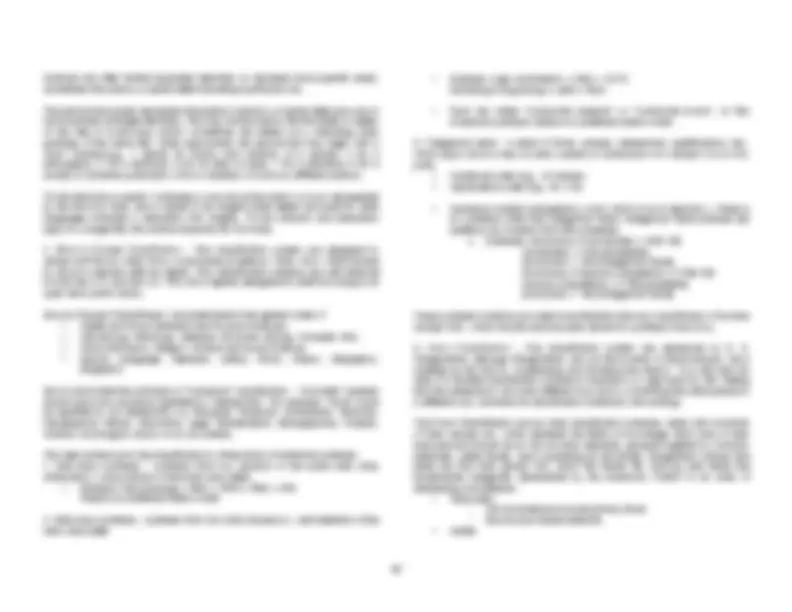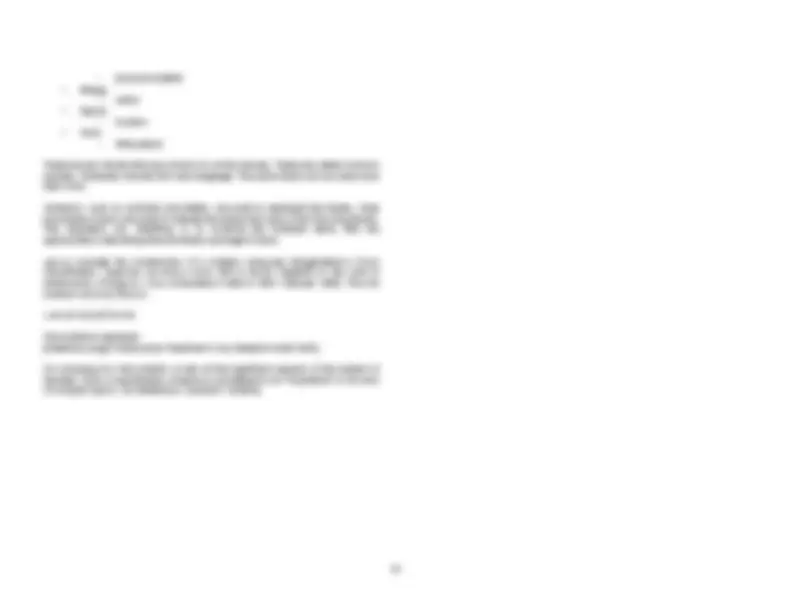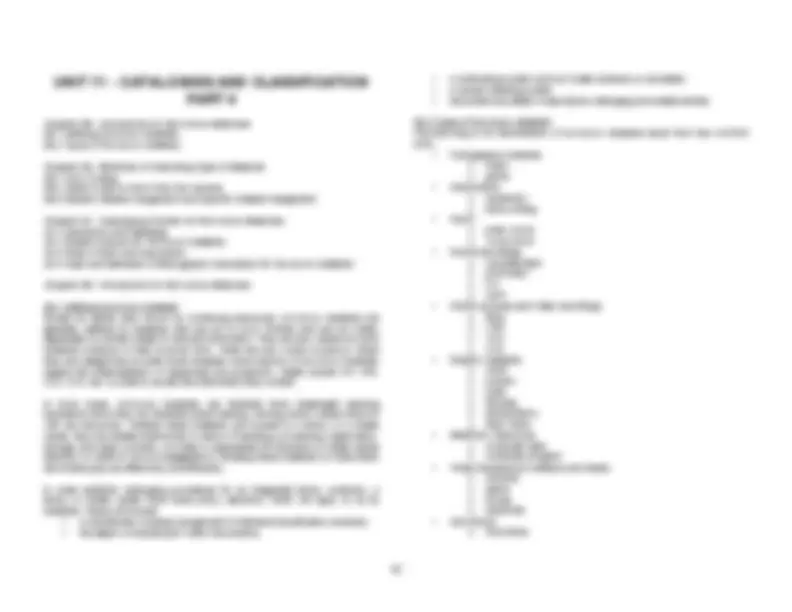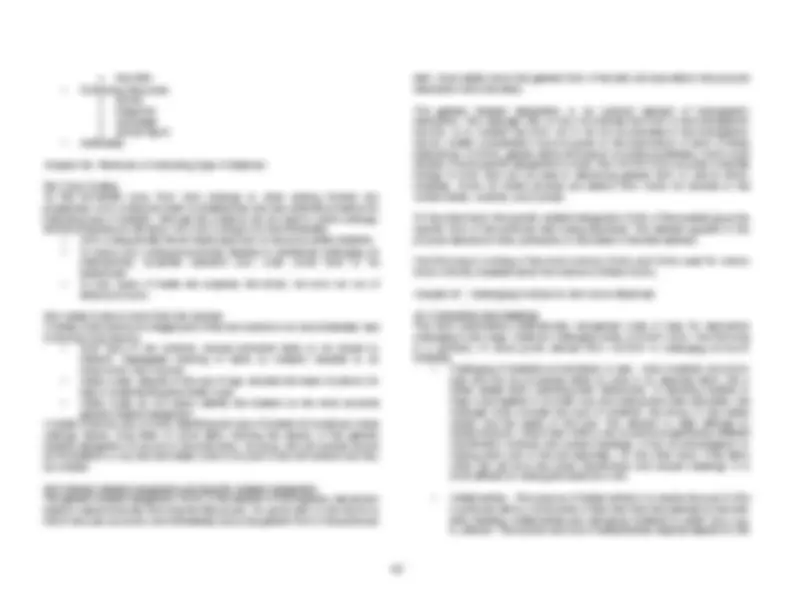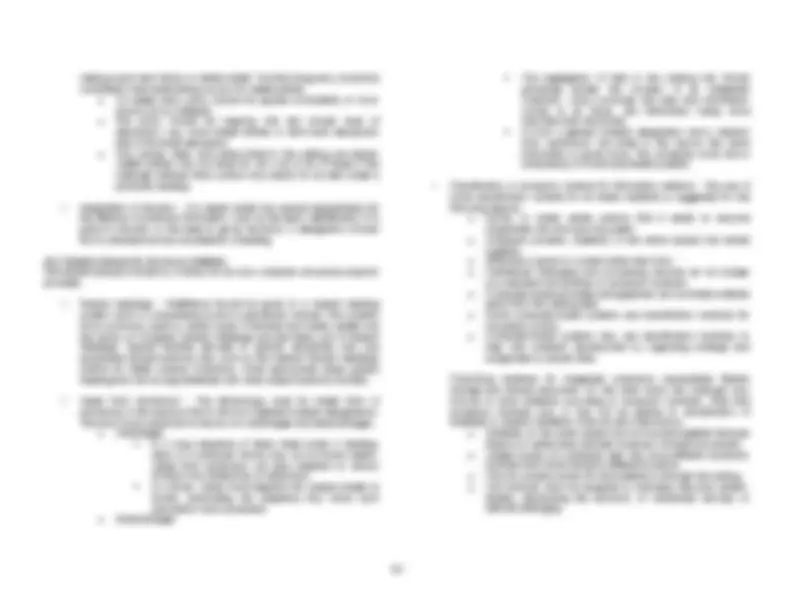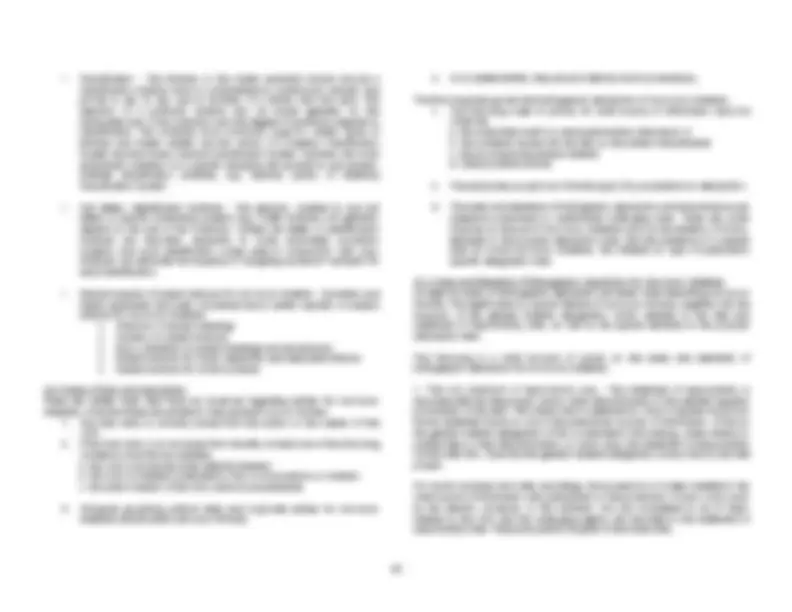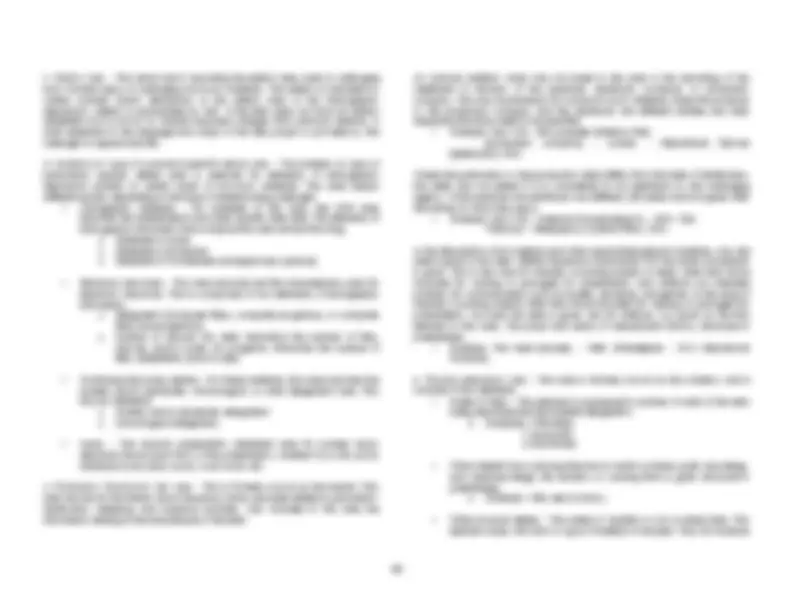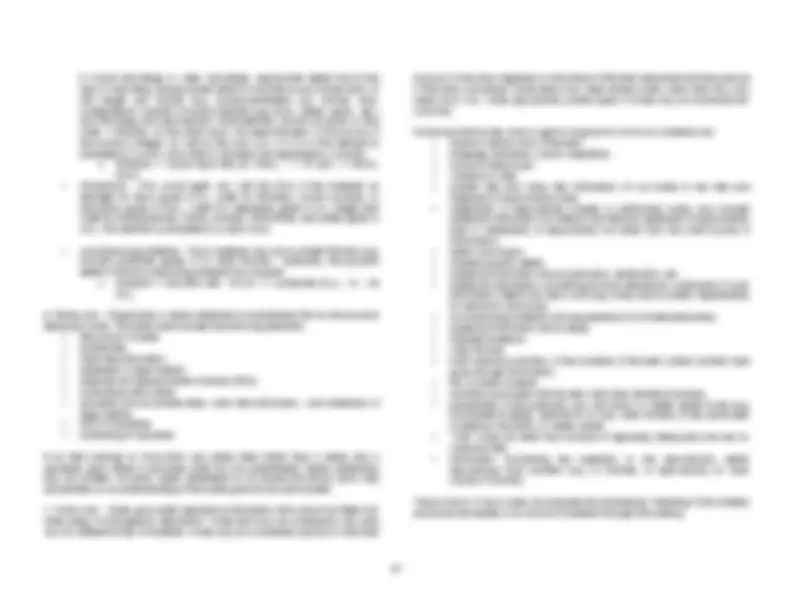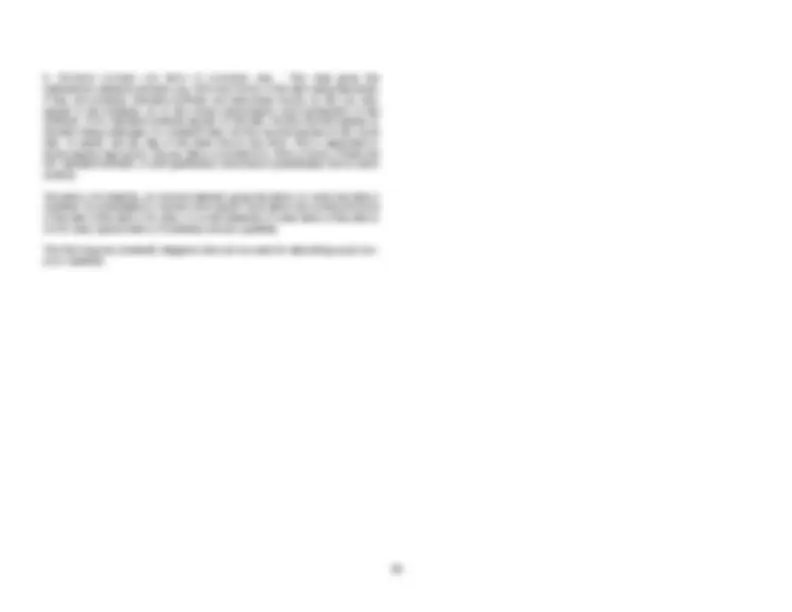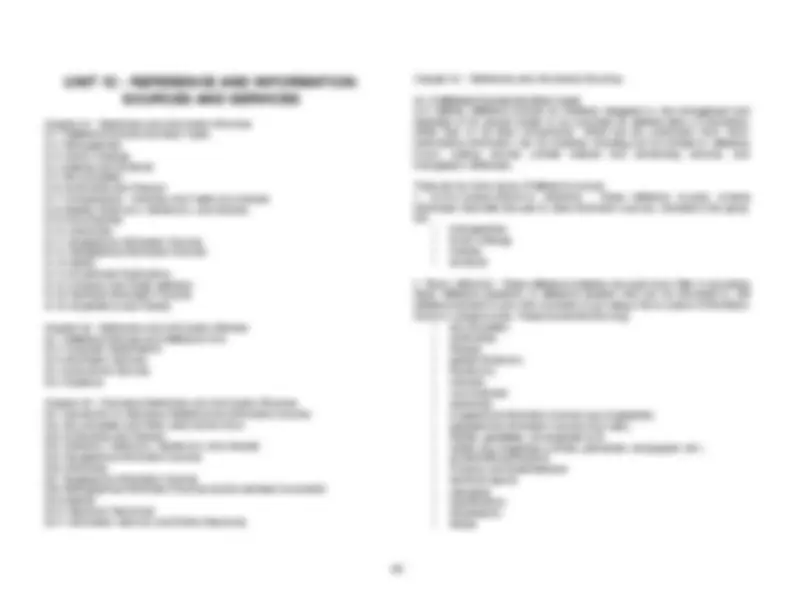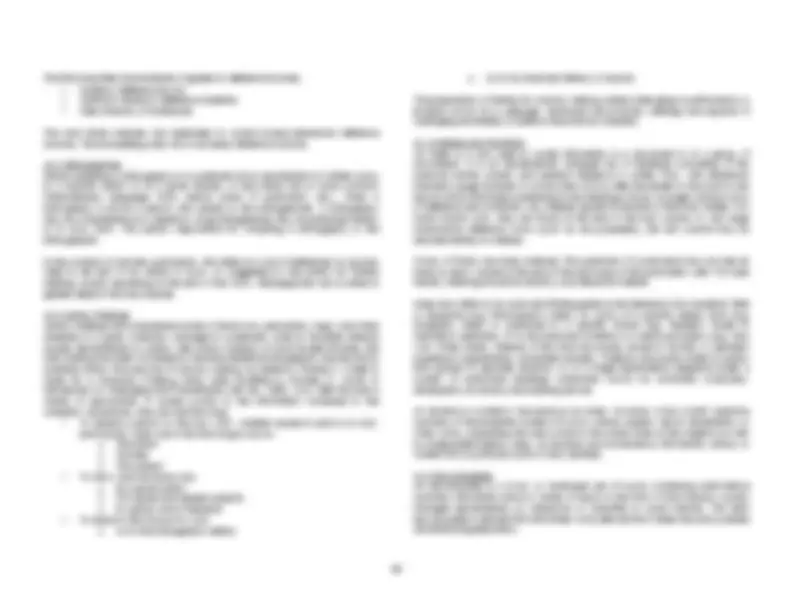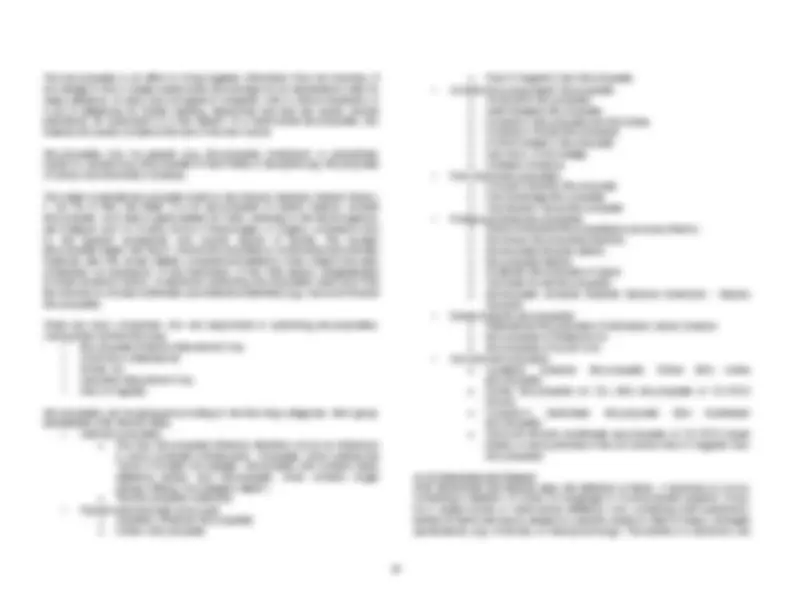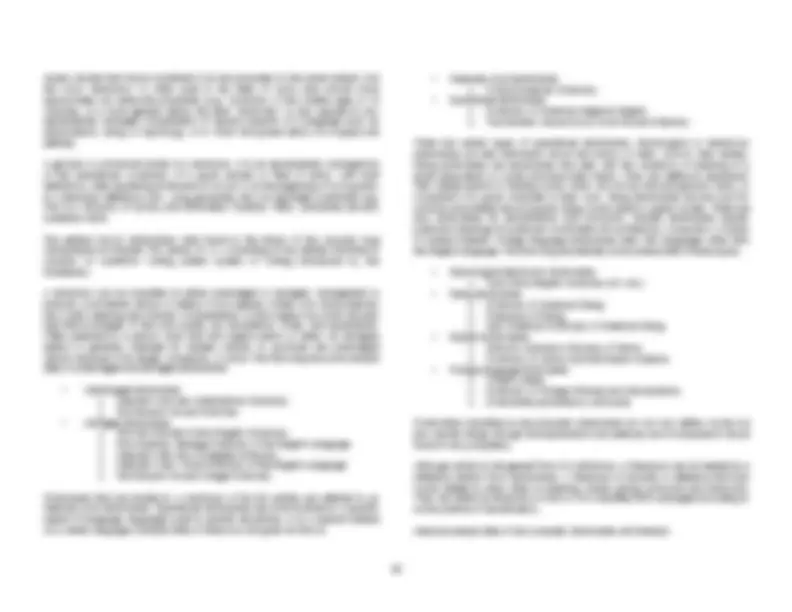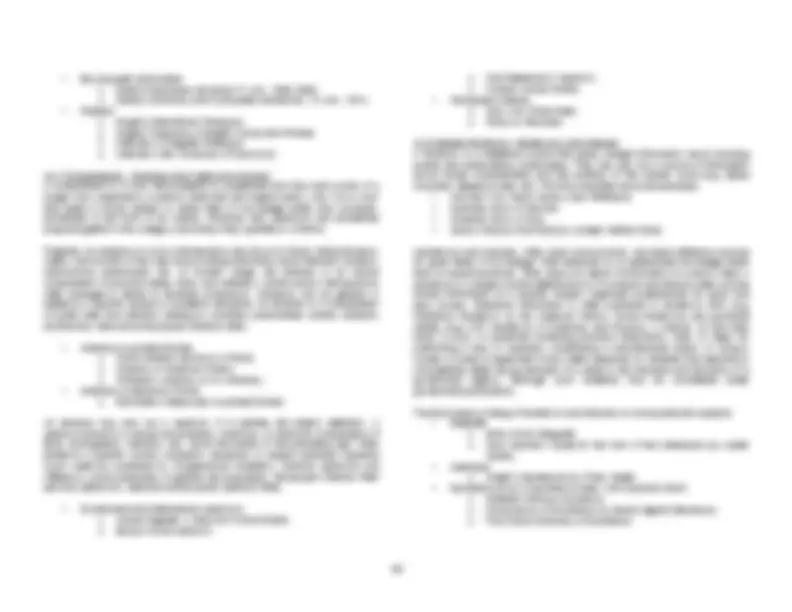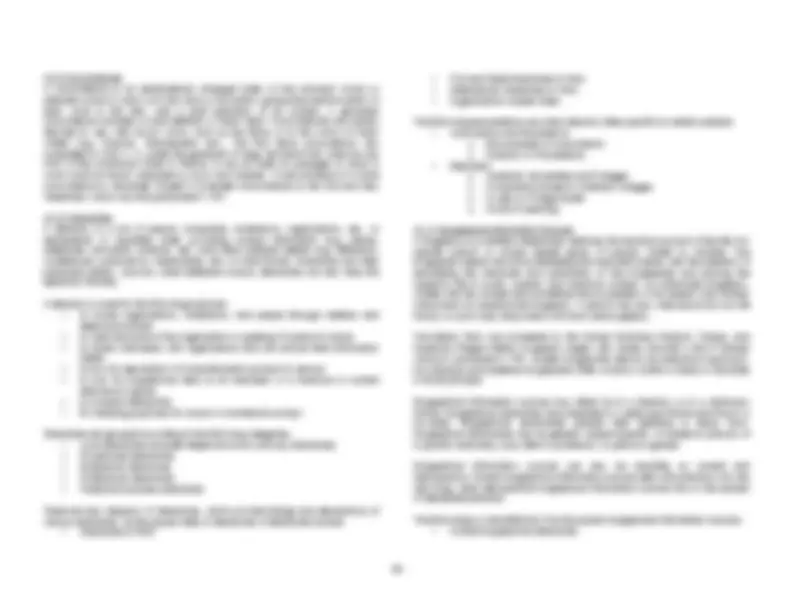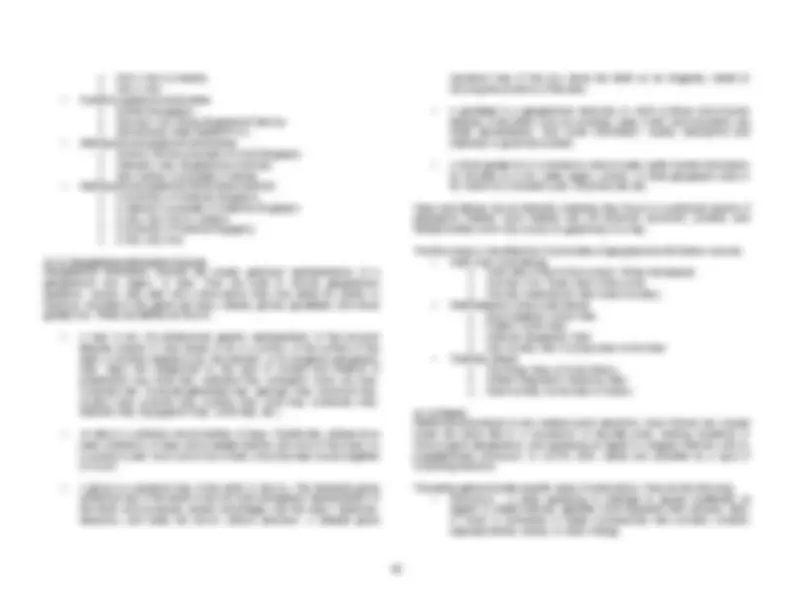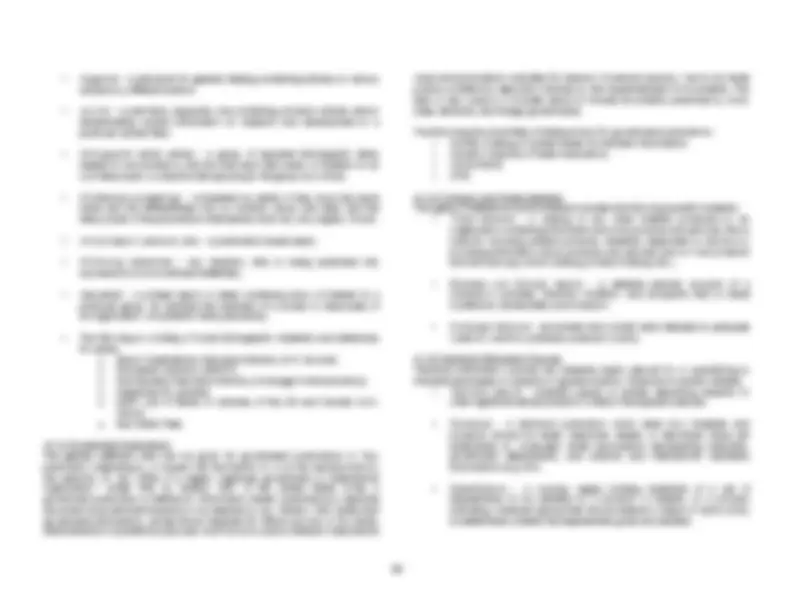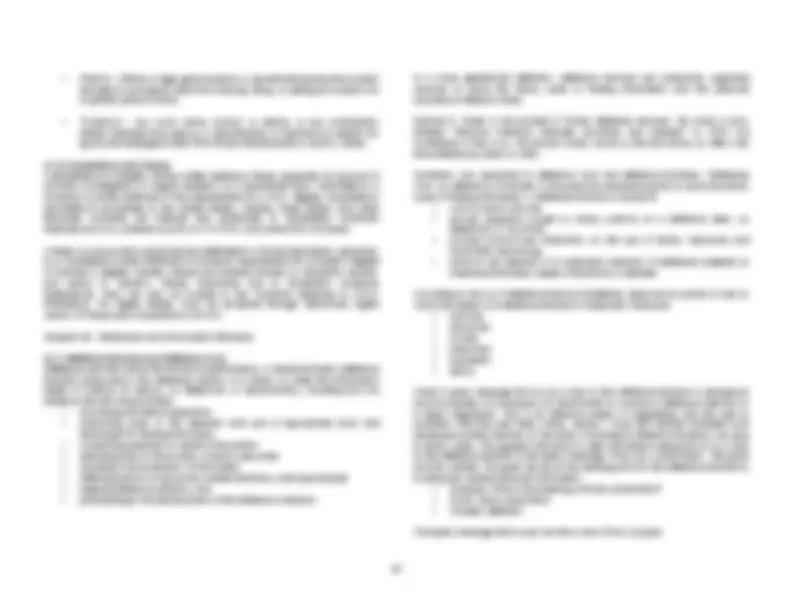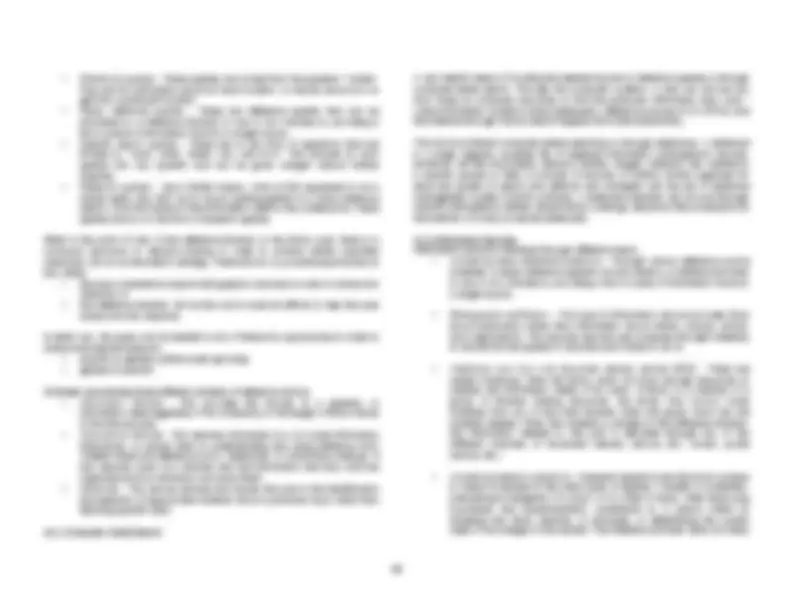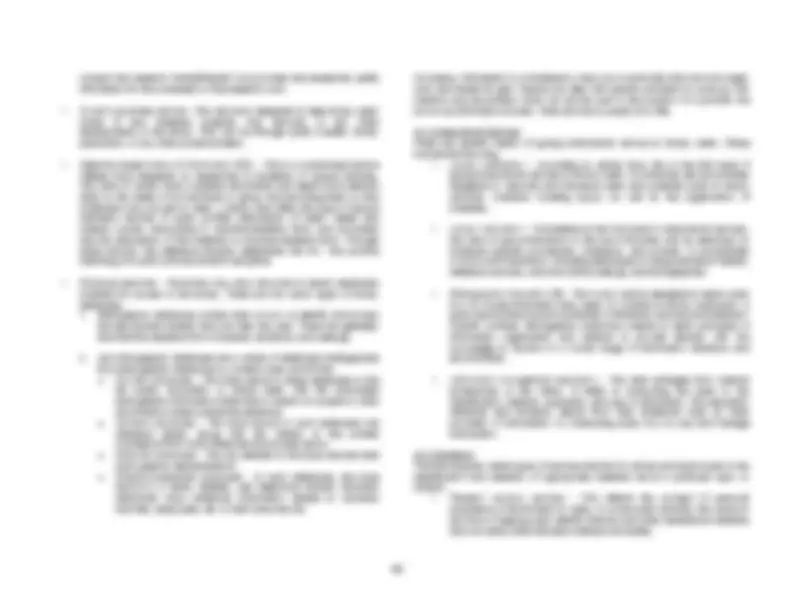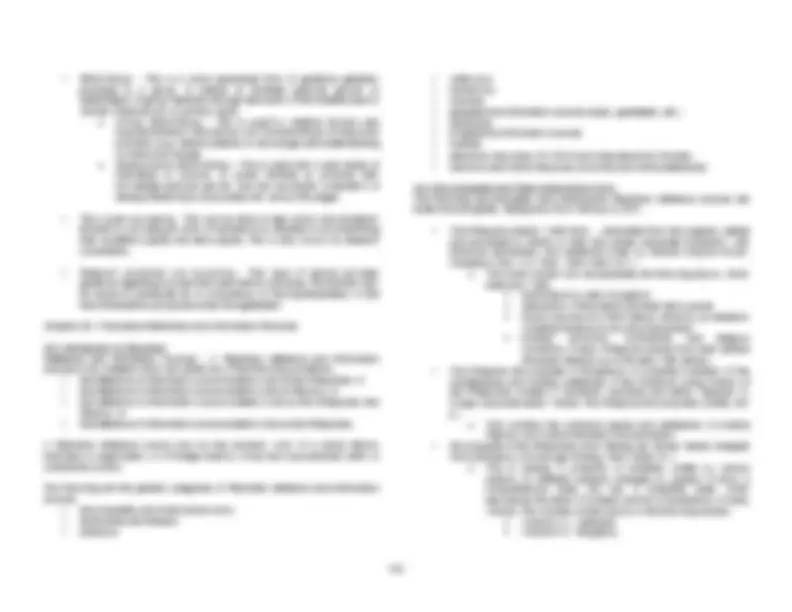Download LIS Reviewer for Board and more Study notes Library science in PDF only on Docsity!
LIBRARY AND INFORMATION
SCIENCE REVIEWER
TABLE OF CONTENTS
Unit 1 - Laws and Practices Related to Librarianship Unit 2 - Management: Theory and Practice for Library and Information Science Unit 3 - Library Management Part 1: Academic Libraries Unit 4 - Library Management Part 2: Special Libraries Unit 5 - Library Management Part 3: School Libraries Unit 6 - Library Management Part 4: Public Libraries Unit 7 - Collection Development Unit 8 - Cataloging and Classification Part 1 Unit 9 - Cataloging and Classification Part 2 Unit 10 - Cataloging and Classification Part 3 Unit 11 - Cataloging and Classification Part 4 Unit 12 - Reference and Information: Sources and Services Unit 13 - Bibliographies and the Development of Books and Libraries Unit 14 - Indexing Unit 15 - Abstracting Unit 16 - IT for LIS Part 1: Computers and Data Resource Management Unit 17 - IT for LIS Part 2: Internet and Networks
UNIT 1 - LAWS AND PRACTICES RELATED TO
LIBRARIANSHIP
Chapter 1 - Professional Regulations Commission (PRC) - An Overview of Its Modernization 1.1 The New PRC Law - RA 8981 1.2 Composition of the PRC Chapter 2 - The Latest Laws in Philippine Librarianship 2.1 RA 9246 2.2 RA 6966 vs. RA 9246 2.3 Objectives of RA 9246 2.4 Scope of the Practice of Librarianship 2.5 The Professional Regulatory Board (PRB) for Librarians 2.6 RA 8047 Chapter 3 - Licensure Examination and Registration 3.1 History 3.3 Scope of Examination 3.2 Qualification of Applicants 3.4 Rating in the Board Examination 3.5 Registration without Examination 3.6 Refusal of Issuance of Certificate of Registration or Professional Identification Card 3.7 Revocation and Suspension of Issuance of Certificate of Registration or Professional Identification Card, or Cancellation of Temporary / Special Permit 3.8 Roster of Librarians Chapter 4 - Practice of Librarianship 4.1 Illegal Practice of Librarianship 4.2 Penal Provisions 4.3 Integrated and Accredited National Organization of Librarians 4.4 Employment of Librarians 4.5 Continuing Professional Education Program for Librarians Chapter 5 - Various Organizations and Celebrations Related to Librarianship 5.1 ALA 5.2 CONSAL 5.3 PCCA and NCCA 5.4 NCLIS 5.5 PLAI 5.6 Philippine Book Development Chapter 1 - Professional Regulations Commission (PRC) - An Overview of Its Modernization 1.1 The New PRC Law - RA 8981 Republic Act (RA) No. 8981, otherwise known as the PRC Modernization Act of 2000 was approved on December 5, 2000. It expressly repealed Republic Act No. 546, Presidential Decree (PD) No. 223 (which created the PRC), Presidential Decree No. 657, Republic Act No. 5181, and Executive Order (EO) 226 (1995). The relevant features of the new PRC law are as follows:
- seven (7)-year term of office of the PRC Commissioner without reappointment, and
- qualifications for the chairperson or commissioner
- must be at least forty (40) years old
- must hold a valid certificate of registration
- must have at least five (5) years of experience in executive or managerial functions. 1.2 Composition of the PRC Presently, PRC is a three (3)-person commission headed by one full-time chairperson and two (2) full-time commissioners. PRC is under the Office of the President. One of the commissioners must be a past chairperson, or at least a member of a Professional Regulatory Board (PRB) office. The following are the incumbent PRC officers: Chairperson: Dr. Alcestis Guiang Commissioners: Avelina de la Rea-Tan Leonor T. Rosero PRC presently regulates the Professional Regulatory Board (PRB) offices of forty- two (42) professions excluding law. Through Executive Order (EO) No. 496, s. 1991, PRC implements a uniform procedure for the selection of members of any Professional Regulatory Board office. The PRC gives an award to outstanding professionals for the year. This year's awardee for the PRC Award is Susima Gonzales. There is an association of the different professional regulatory boards and its members, which is the Philippine Association of Board Examiners (PABE). Chapter 2 - The Latest Laws in Philippine Librarianship 2.1 RA 9246 The latest law in Philippine librarianship is Republic Act (RA) No. 9246, an act modernizing the practice of librarianship in the Philippines. It repealed the old RA
- The complete title of this law is stated as "An act regulating the practice of
- active in the practice of librarianship for at least ten (10) years, five (5) years of which is in a managerial position
- must not be a member of the faculty of a university, college, school, or institution conferring the academic degree of librarianship or offering review classes for librarian licensure examination nor a person who has a direct/indirect pecuniary interest in any such institution
- must not be an incumbent officer of the accredited integrated national professional organization of librarians Retired librarians can be members of the board if they are still active in the practice of librarianship. Furthermore, under RA 9246, age is no longer one of the qualifications of members of the board. Under RA 6966, a librarian must be at least 40 years of age at the time of appointment. The chairperson and members of the board shall hold office for a term of three (3) years renewable for another term of three (3) years but in no case shall the whole term exceed six (6) years. The members, like in other regulatory boards are selected though the provision in Executive Order (EO) No. 496, s. 1991, which instituted procedures and criteria for the selection and the recommendation of nominees for appointment to vacant positions in the Professional Regulatory Board. The PRB for Librarians embody their decisions and actions in the exercise of its powers and functions through Board Resolutions. The Implementing Rules and Regulations (IRR) of RA 9246 is the first PRB for Librarians Resolution issued in
- Incumbent members of PRB for Librarians are:
- Perla Garcia (Chairman)
- Cora Nera
- Elizabeth Peralejo 2.6 RA 8047 On June 7, 1995, RA 8047, the Book Publishing Development Act was signed into law. The law is geared at promoting the growth and development of book publishing. It envisions the promotion of book readership among Filipinos, particularly the young through book fairs, exhibits, or programs which enhances literacy and good reading habits. Chapter 3 - Licensure Examination and Registration 3.1 History The Board for Librarians of the Professional Regulations Commission (BFL-PRC) has conducted twelve (12) licensure examinations since 1992. The first was held in Manila on December 3 and 4, 1992. The forthcoming examination on November 3- 4, 2005 will be the thirteenth (13th). 3.2 Qualification of Applicants Applicants for licensure examination must meet the following qualifications at the time of filing of application:
- citizen of the Philippines, or foreign citizens whose country has reciprocity with the Philippines as regards the practice of librarianship
- good health and good moral character
- graduate of a Bachelor's Degree in Library Science and Information Science or Master's Degree in Library and Information Science
- within five (5) years from the effectivity of the law, graduate of the following courses are also qualified:
- Bachelor of Science in Education or Elementary Education
- Bachelor of Art with Major or Specialization in Library Science
- Master of Arts in Library Science and Library and Information Science
- any masters degree with concentration in Library Science
- In RA 6966, an age qualification of at least 20 years of age is stated. 3.3 Scope of Examination The licensure examination for librarianship shall consist of the following subjects (with their corresponding relative weights determined by PRB for Librarians pursuant to Res. 1 of the IRR):
- selection and acquisition of multimedia sources of information (15%)
- cataloging and classification (20%)
- indexing and abstracting (15%)
- reference, bibliography, and information services (20%)
- organization, management, development, and maintenance of multimedia-based library and information services, laws, trends, and practices affecting the profession (20%)
- information technology (10%) 3.4 Rating in the Board Examination To pass the licensure examination, an examinee must obtain a weighted general average (WGA) of 75% with no grade lower than 50% in any subject. In RA 6966, there is no grade requirement in its provision, instead it was provided in its IRR - WGA of 75% and a disqualifier of below 60%. Further, the new law deleted the provision on repeaters under RA 6966, which was 3 to 4 times. The percentage distribution of the licensure examination is indicated in the IRR of RA 9246. On the other hand, the weighted general average of passing grades for candidates for professional librarians is indicated in RA 9246 itself.
3.5 Registration Without Examination Sec. 19 of RA 9246 which state that "upon application and payment of the required fees, certificates of registration will be issued without the necessity of licensure examination to qualified applicants," is a grandfather clause. A grandfather clause is a provision in a new law or regulation exempting those already in or part of the existing system which is being regulated. The Board shall issue a Certificate of Registration and Professional Identification Card without examination to an applicant who, on the date of effectivity of RA 6966, is:
- a practicing librarian who has completed at least a bachelor's degree and a librarian or supervising librarian eligible;
- a practicing librarian who has completed at least a bachelor's degree, eighteen (18) units of library science, five (5) years experience in librarianship, and a first grade eligible or its equivalent;
- a practicing librarian who has completed a masteral degree in Library Science or Library and Information Science, and a first grade eligible or its equivalent; or,
- a practicing librarian who has completed at least a bachelor's degree, eighteen (18) units of library science, and seven (7) years experience in librarianship. Qualification must have been present on December 5, 1990 (effectivity date of RA 6966). Application to avail of this section is three years from the effectivity of this law on March 16, 2004. The first three are also those qualified under RA 6966, and the fourth are those who were left out under RA 6966 because they are not civil service eligible. 3.6 Refusal of Issuance of Certificate of Registration or Professional Identification Card The Board shall not register any successful examinee or any applicant for registration without examination if he/she
- has been convicted by a court of competent justification of any criminal offense involving moral turpitude
- has been found guilty of immoral or dishonorable conduct after investigation by the Board
- has been declared to be of unsound mind. 3.7 Revocation and Suspension of Issuance of Certificate of Registration or Professional Identification Card, or Cancellation of Temporary / Special Permit The Board has the power, after due notice and hearing, to revoke or suspend the Certificate of Registration, or cancel a temporary or special permit of any librarian on any of the following grounds:
- on grounds per Sec. 22 of RA 9246 (See 3.5)
- unprofessional or dishonest conduct
- malpractice
- incompetence
- serious ignorance or negligence in the practice of librarianship
- fraud
- deceit or falsification in obtaining a Certificate of Registration, Professional Identification Card, or Temporary or Special Permit
- abetment of illegal practice of allowing illegal use of his/her Certificate of Registration, Professional Identification Card, or Temporary/Special Permit practice of profession during the period of suspension
- any violation of RA 9246, IRR, Code of Ethics, Code of Technical Standard for Librarians, or Board policies. 3.8 Roster of Librarians The Board and the Integrated and Accredited National Organizations of Librarians shall maintain a roster which is
- up-to-date
- complete
- properly organized
- arranged alphabetically by surnames with addresses and license numbers
- arranged numerically by license numbers. Copies of the roster shall be provided as permanent record to The National Library (TNL), Civil Service Commission (CSC), and the Accredited Integrated National Organizations of Librarians. To date, there are 4,120 licensed librarians throughout the Philippines. Chapter 4 - Practice of Librarianship 4.1 Illegal Practice of Librarianship Illegal practice of librarianship occurs when a person practices or offers to practice librarianship, or assume any position which involve performing the scope or function provided in Sec. 5 of RA 9246 and does not have a valid Certificate of Registration, Professional Identification Card, or Temporary/Special Permit from the Commission. As stated in Sec. 29 of RA 9246, librarians registered under RA 6966 are automatically registered under the new law. The following are required to be indicated in the yet to be determined document in connection with the practice of librarianship:
- Certificate of Registration No.
- Professional Identification Card No.
- Professional Tax Receipt No.
5.2 CONSAL
The Congress of Southeast Asian Librarians (CONSAL) was formed in August
- CONSAL convenes a general conference at least once in three (3) years in each member country by rotation. In 2006, CONSAL XIII will be held in Manila. Likewise, CONSAL II and VII were held in the Philippines. The following are the present members of CONSAL:
- Brunei - Indonesia - Laos - Myanmar - Malaysia - Philippines - Singapore - Thailand - Vietnam - Cambodia
5.3 PCCA and NCCA The Presidential Commission on Culture and Arts (PCCA) was created by Executive Order (EO) No. 118, s. 1987. It was mandated to promulgate and maintain the national policy, support, and dissemination of frameworks for culture and the arts. By virtue of RA 7356, this Commission has its successor-in-interest - the National Commission for Culture and Arts (NCCA). It now formulates policies for the development of culture and arts and implements these policies in coordination with affiliated cultural agencies. 5.4 NCLIS The National Commission on Libraries and Information Services (NCLIS) is a committee under the Sub-Commission on Cultural Heritage of the NCCA which is tasked to formulate policies for the development of culture and arts by libraries, librarians, and library educators. The incumbent officers of NCLIS are the following: - Head: Dr. Ofelia Carague - Vice Head: Thelma Kim - Secretary: Milagros Ong - Asst. Secretary: Dr. Marianita Dablio - Members: o Claudette Albano o Arabella Ananoria o Rosemarie Ante o Cynthia Dagus o Dr. Wilma Medrano o Rebecca Napiere o Rosario Ruiz o Lourdes Soriano o Iluminada Yap o Representatives from TNL and PLAI 5.5 PLAI On October 23, 1923, the Philippine Librarians' Association, Inc. (PLAI) was established. PLAI has a National Board of Trustees elected by the House of Delegates. Its officers may serve for not more than three terms. The PLAI Secretariat on the other hand, is responsible in providing administrative and technical support to the organization, headed by an Executive Officer. There are two (2) big annual celebration of PLAI mandated:
- Proclamation No. 109, s. 1936 designated the period from November 24- 30 each year as National Book Week.
- Proclamation No. 837, s. 1931 declared the month of November 1991 and every year thereafter as "Library and Information Services Month." Agencies tasked to spearhead this celebration are The National Library and the National Committee on Library and Information Services (NCLIS) of the National commission on Culture and Arts (NCCA). 5.6 Philippine Book Development Month In 1997 and 1998, Proclamation Nos. 1014 and 1222 respectively, were issued to declare the month of June in 1997 and 1998 as the Philippine Book Development Month. But on June 25, 1999, Proclamation No. 120 was issued declaring the month of June 1999 and every year thereafter as the Philippine Book Development Month. The intention of this is to conduct an annual national celebration to focus national attention on the contribution of books in the economic and social growth of the country. During this period, the National Book Development Board (established pursuant to RA 8047) is tasked to adopt measures and implement activities.
UNIT 2 - MANAGEMENT: THEORY AND
PRACTICE FOR LIBRARY AND INFORMATION
SCIENCE
Chapter 6 - Defining Management 6.1 What is Management? 6.2 Management - Art or Science? Chapter 7 - The Development of Management Thought 7.1 Introduction to Management Thought 7.2 Scientific Management Movement 7.3 Classical Movement 7.4 Human Relations School 7.5 Systems Approach Chapter 8 - Management - Skills and Levels 8.1 Managerial Skills 8.2 Managerial Levels Chapter 9 - The Management Functions 9.1 Planning 9.2 Organizing 9.3 Staffing 9.4 Directing 9.5 Controlling 9.6 Marketing Chapter 6 - Defining Management 6.1 What is Management? Management has several meanings depending on context and purpose.
- As a discipline, it is a learning field much like education, medicine, law, and so on.
- As a profession, it is a career pursued though a long period of study.
- As a group of people, it is the group that directs the operations of an organization.
- As a process, it is considered as the fundamental integrating activity aimed at achieving pre-determined goals.
- Management is basically the activity of directing the work of people in the fulfillment of organizational goals, or simply getting things done through others. - Management is a crucial tool in facilitating and directing the work of a group of people to achieve pre-determined organizational goals. It is essential in utilizing scarce resources to accomplish maximum output. 6.2 Management - Art or Science? Management is both an art and a science.
- As an art, it brings ends and means together. Skills are basically required in this sense. This can be found in the task of communicating, leadership, and goal-setting.
- As a science, management is subject to observation, analysis, and theoretical formulation in much the same way as sociology, psychology, and economics. The scientific approach to management lies in decision- making, planning, and adoption of new technology. Chapter 7 - The Development of Management Thought 7.1 Introduction to Management Thought One of the most important factors on successful fulfillment of enterprise objectives is an awareness of the continuing development of an accurate theory of management and its proper application to the real world of library and information center practice. There are four major phases that can be identified in tracing how management theories have evolved:
- Scientific management movement
- Classical movement
- Human relations school
- Human behavior movement
- Self-actualizing movement
- Systems approach o Decision-theory movement o General systems theory movement o Psychological theory movement 7.2 Scientific Management Movement The scientific management movement is also known as the "machine model," since it is focused on shop operations. Its assumption is that workers are economically motivated. Frederick W. Taylor developed detailed systems intended to gain maximum efficiency from both workers and machines in the factory. These systems relied on two studies - time study (developed by Taylor) and motion study (developed by Frank and Lilian Gilbreth), which help determine the best methods for performing a task in the least amount of time. Henry Gantt is attributed to his task-and-bonus system which he introduced during this phase.
1. Decision theory movement - This is primarily concerned with the study of rational decision-making procedures and the way managers actually make decisions. This movement introduced mathematical methods and quantitative models to serve as the basis for all management decisions. Major by-products of decision theory management are management information systems (MIS) and decision support systems (DSS). 2. General systems theory movement - General systems theory movement integrates knowledge from the biological, physical, and physical sciences. Ludwig van Bertlanffy is the father of this movement. He was the first to talk about the "system theory of organisms." At this point, system refers to a set of elements standing in interrelation among them and with the environment. 3. Psychological theory movement - Based upon the personality theory, this movement views the human being as a complex organism metamorphosing through physiological and psychological stages to maturity. This movement includes contingency approach/management-situational approach. Chapter 8 - Management - Skills and Levels 8.1 Managerial Skills The following are the required skills for a manager: 1. Technical - This includes understanding and being efficient in a specific activity, such as a process, procedure, or technique. 2. Interpersonal - This refers to the ability to work with others and to win cooperation of people in the work group to achieve goals. 3. Conceptual - This is the ability to seethe "big picture" to envision all the functions involved in a given situation or circumstance. 8.2 Managerial Levels There are three basic managerial levels that may apply in any organization: 1. Top managers - Top managers are concerned with long range planning involving subjective judgments of the decision-maker. 2. Middle managers - Middle managers implement the goals of the organization. Of the five management tasks, organizing and staffing are what they principally deal with. 3. Supervisory-level managers - A supervisory-level manager's job is to make operational decisions which are predictable decisions that can be made by following a well-defined set of routines. Chapter 9 - Management Functions 9.1 Planning Planning involves setting up objectives (both long and short term) and developing strategies for achieving them. It is done in order to - offset uncertainty and the unexpected - have flexibility in face of change - bring organizations forward - focus on the organization's future - keep a tight rein on financial resources - have better control and management. In planning, several factors must be considered. These include - time - data collection and analysis - level of planning - flexibility, and - accountability There are various types of plans. 1. Purpose or mission - This identifies the business the organization is into. 2. Objectives or goals - They end toward which activities are aimed. Objectives and goals are refinements aimed to concretize abstract mission statements. 3. Strategies - These are long-term objectives, state course/courses of action adopted, and allocation of resources needed. They serve as framework that will guide thinking and action. 4. Policies - They are general statements to guide thinking in making decisions. They ensure the consistency of decisions in relation to objectives. Policies come in several forms. a. Originated policy - This type of policy is developed to guide the general operations of the organization. They flow mainly from the objectives and are the main source of policy making in an organization. b. Appealed policy - This forces a decision or policy. They are made up of snap decisions. c. Implied policy - This type of policy is unwritten and is developed from actions that people see about them and believe to constitute policy. d. External imposed policy - This type of policy come through several channels. They dictate the working in an institution. 5. Procedures - This is a set of required methods of handling activities. Specifically, these are chronological sequence of steps to guide action. 6. Rules - They are meant to regulate personal and professional behavior for the common good. Rules are flexible and specific, leaving no room for doubt.
- Programs - These are mini plans in themselves, as they include practically all the other plans mentioned above with the necessary resources to carry out a course of action.
- Budgets - These are plans that are rendered in numerical or financial terms. There are several techniques that must be considered in planning.
- Standards - They mean being able to set any measure by which one judges a thing as authentic, good, or adequate.
- Forecasting - This designates a process of projection or prediction.
- Projections - are based on some type of analysis or qualitative judgments.
- Predictions are opinions about facts.
- Forecasts are predictions based on assumption about the future. A very crucial part in the process of planning is decision making - the process of making a choice between alternatives. Decision making process has four phases.
- Intelligence gathering - This is the search for conditions requiring a decision.
- Design - In this phase, available courses of action are determined and analyzed to ascertain their relative values as solutions to the decision.
- Choice - At this point, available courses of action are determined to convert present less desirable situation into a favorable one.
- Review - This is a review of past choices in order to adjust new directions. In most organizations, group decision-making is a common practice. It involves group dynamics, delegation or responsibility, channels of communication for decision-making, and specializations for decision-making purposes. Group decision-making has its advantages:
- Group judgment - The deliberation of a group over a certain matter is important in identifying alternatives that must be considered.
- Group authority - Group decisions prevent the fear of allowing one person to have too much authority. The role of leadership in the organization is not diminished but altered.
- Communication - Group decision-making permits wide participation in the process and has influence on employee motivation. On the contrary, group decision-making has also its disadvantages.
- Cost - Much time, energy, and money is needed in making group decisions.
- Compromise - There is forced compliance to uniformity and majority rule.
- Indecision - It is inevitable that there are delays in reaching a final decision because of lengthy deliberations.
- Power - It is possible for one individual to emerge as a leader who can influence the whole or majority or of the process.
- Authority - Groups are frequently used to make decisions beyond their authority and this can cause delay if the decision is rejected by the management. 9.2 Organizing Organizing determines the specific activities necessary to accomplish the planned goals. It is aimed to group the activities into a logical framework of structure, assigning authority and responsibilities to people for their accomplishment. Certain principles are employed in organizing.
- Departmentation - This is the basis on which work and individuals are grouped into manageable units.
- Scalar principle of hierarchy - This determines the chain of authority ranging from the ultimate to the lowest ranks.
- Delegation - This is the downward transfer of formal authority from one person to another within prescribed limits.
- Centralization - This indicate that authority is concentrated at the topmost level of the hierarchy and that most decisions are made by those at the top.
- Decentralization - Contrast to centralization, authority to make decisions is pushed down in the organizational structure.
- Line and staff positions - Line positions are responsible and accountable for the organization's primary objectives. Staff positions provide advice and support to the line position.
- Span of control - This refers to the number of people and/or activities a manager can efficiently manage.
- Unity of command - The main idea here is that every person within the organization should orders from and report to only one person. 9.3 Staffing Staffing is the function that involves recruitment, selection, hiring, placement, and development of human resources required by the organization.
- Recruitment - This is a process of attracting the appropriate number of qualified individuals to apply for vacant positions in an organization. There are three fundamental factors that need to be considered in this process: o job analysis o job description o source of applicants
- Power position - the power and authority that are associated with the leader's position Communication provides cohesiveness and direction in an organization. The typical elements of this process include the following.
- Source - This is the sender of the message. The source has some thought, need, or information to communicate.
- Message - The source has to encode the information in some form that can be understood by both sender and receiver.
- Channel - This is the link between the source and the receiver.
- Receiver - This is none other than the recipient of the message.
- Feedback - This is the receiver's response and the nature of action carried out by the receiver. Communication comes in various forms.
- Written communication - This form of communication provides a lasting record and ensures uniformity in matters like policy.
- Oral/verbal communication - In this form of communication, there is instant feedback through which clarifications can be accomplished.
- Non-verbal communication - Unwritten or unspoken, this can provide many clues to an observer. Body language is a particular type. Communication flows in any of three directions.
- Downward - This is the most common type of communication within an organization. It flows from superiors to subordinates.
- Upward - This consists of messages that flow from subordinates to superiors. Most of these messages ask questions, provide feedback, or make suggestions.
- Horizontal - This is the lateral exchange of information within an organization. In competitive organizations, information is not always shared because the employee who possesses the information wants to retain a competitive advantage over the others. 9.5 Controlling Controlling is the function of monitoring performance and undertaking corrective action(s) to assure the attainment of pre-determined goals and objectives of the organization. There are several techniques employed in controlling.
- Evaluation - This identifies areas needing improvement with an aim toward corrective action.
- Cost-benefit analysis - This is a systematic approach which seeks to
- determine whether or not a particular program or proposal is justified,
- rank various alternatives appropriate to a given set of alternatives, and
- ascertain the course of action needed top attain these objectives.
- Management information system (MIS) - This is a technical tool to gather data, summarize it, and present it as an information to be used in the control process and for decision-making.
- Decision support system (DSS) - As an extension of MIS, it takes advantage of the continuous development in the database management and modeling arena to offer software that support computerized decision- making.
- Operations research - This is an experimental and applied science devoted to observing, understanding, and predicting the behavior of purposeful systems. Operations researchers are actively engaged in applying the knowledge to practical problems.
- Program evaluation and research technique (PERT) - PERT is a method of planning and scheduling work which involves identifying all the key activities in a particular project, devising the sequence of activities, and arranging duration of time for the performance of each phase of the work to be done. A special part of the controlling function is budgetary control - the method of rationalization whereby estimates covering different periods of time are, by the study of statistical records and analytical research of all kinds, established for all, and everything that affects the life of a business concern can be expressed in figures. There are various techniques in budgeting that an organization can consider. Here are some of them.
- Line-item budgeting - This is the most common technique. In this technique, the budget is divided into broad input classes or categories (such as salaries or wages, materials and supplies, equipment, capitals and expenditures, and miscellaneous), with further subdivisions within these categories. It can be inflexible, unless the system allows the reallocation in cases where there is need to do so. This budget is easy to prepare. Most of the allocations are done by simply projecting current expenditures to next year, taking cost increases into account. However, this technique has almost no direct correlation with the organization's objectives.
- Lump sum - In this technique, there is a certain allocation given by the parent institution to its sub-units and it is up to the manager of each sub- unit to decide how the sum will be broken into categories.
- Formula budgeting - This uses pre-determined standards for allocation of financial resources. It is expressed in terms of a percentage of the total institutional budget.
- Program budgeting - Here, the budget is concerned with a particular program with its set of activities and not with the individual items or expenditures. It maintains that it is possible to relate to the programs to accomplishments to time/action objectives or activities that are stated in output terms in the strategic planning process.
- Performance budgeting - In this technique, expenditures are based on the performance of activities and the efficiency of operations. Therefore, it weighs more on quality over quantity of service. It is based on cost- benefit analysis.
- Planning Programming Budgeting System (PPBS) - This was developed in the US by Rand Corporation and was introduced to the Department of Defense by Robert McNamara in 1961. At that time, President Lyndon B. Johnson directed all government agencies including government-ran universities and colleges to implement it. By 1965, it was used by all agencies. The technique combines the best of both program budgeting and performance budgeting. The emphasis is on planning and evaluation. It begins with the establishment of goals and objectives and introduces controlling measures. PPBS has the following specific steps: - Identifying the objectives of the organization - Presenting alternative ways to achieve objectives with cost- benefit ratios presented for each - Identifying activities that are necessary for each program - Evaluating the result so that action can be taken It combines the function of planning (stating objectives), translating into a program, and stating requirements in budgetary terms (financing). The key to success is the selection of criteria for evaluating each alternative against relevant objectives.
- Zero-based budgeting - This focuses on two basic questions:
- Are the current activities efficient and effective?
- Should current activities be eliminated or reduced to fund higher priority new programs or to reduce current budget? It requires organizations to review and evaluate each of their service programs and activities on the basis of both output measures as well as costs. 9.6 Marketing Marketing is the analysis, planning, implementation, and control of carefully formulated programs designed to bring about voluntary exchange of values with target markets for the purpose of achieving the organization's objectives. The marketing mix consists of the following:
- Product - This is the tangible commodity, or the intangible service that an organization offers to its customers/clients.
- Price - This refers to the amount of money customers/clients are willing to part with to avail or use a product or service being offered.
- Promotion - This is the provision of relevant information to perspective customers/clients to persuade them to patronize a product/service.
- Place - This determines the availability in the right direction of an organization's product/service and the accessibility of channels of distribution. Not all library managers probably appreciate the significance of marketing, but that does not invalidate the premise that this function is central to the library as an organization. If the library is to be a responsive organization, one whose primary goals relates to satisfying the information needs and wants of its real and potential clients, then librarians would do well to consider the contribution of a marketing program to the achievement of that goal.
the chair of the committee. The committee is a legitimizing body for policies, rules, and regulations, but the librarian must see to it that she has control over the minutes. It is very important for the librarian to secure the minutes by any means. In academic settings, certain questions are asked, such as:
- To whom is the librarian directly responsible?
- Who chooses library staff?
- Who controls the budget?
- Who represents the staff outside the institution? The librarian needs control over all of these areas for effective management. Threats in relationships with the academic community include influencing academic decisions in areas outside the library, and indifference of the faculty, in action of the chief librarian. The chief librarian must act as leader for his/her staff and library matters. It is crucial for him/her to be identified with the library. He/She must display good judgment over organizational and professional matters, and must take risks when necessary. In most academic settings, the chief librarian must be able to relate well with the board of trustees, the president, the library committee, the dean, the faculty, the students, and the finance officer. If relationship with these people is not good, the librarian will find himself/herself members of groups such as the school forum, the administrative council, or the curriculum committee among others, and will be appointed to represent the library outside the institution. 10.4 Problems Faced by Academic Librarians The main problem facing academic libraries is their inability to maintain their acquisitions and services at previous levels due to:
- budget cuts and inflation
- staff cuts and competencies
- more resource allocations for ICT than acquisitions
- inadequate space
- absence of a strategic development plan
- low image of librarians as compared with the faculty, which might be the reason for lack of cooperation of faculty
- administration's lack of knowledge and appreciation about the importance of the library to education Chapter 11 - Management in Academic Libraries: Definition and Description of Management Functions 11.1 Management for Academic Libraries Defined In general, management is the act or skill of transforming resources (collection, staff, finances, etc.) into output to accomplish desired result or objective. This implies that head librarians and/or section heads must be able to influence the achievement of objectives by means of a number of management functions such as planning, organizing, staffing, controlling or directing, coordinating, reporting, budgeting, and communicating. 11.2 Planning Planning establishes goals, and develops policies, procedures, and programs to achieve them. It is the process of getting an organization to where it is to where it wants to be in a given period of time by setting it on a pre-determined course of action. Planning is working out in the broad outline of things that must be done and the methods of doing them in order to accomplish the organizational purposes. The construction of a strategic development plan with a long term vision and a short-term plan is also involved. The plan will set out the aims and objectives of the organization and decide where the library would want to be in certain time and indicate how to get there through various activities. Targets and performance measure for each activity must be set. 11.3 Organizing Organizing is grouping activities and establishing organizational structures and procedures to ensure that activities are performed. It is the process by which the manager brings order out of chaos, removes conflicts between people over work or responsibility, and establishes an environment suitable for teamwork. Organizing ensures the establishment of the formal structure of authority through which work subdivisions are arranged, defined, and coordinated for the defined objectives. Organically oriented systems/organizations are where authority and power are delegated and dispersed. Collaboration and consultation are emphasized, and the organizational chart features a wide span of control. 11.4 Staffing Staffing is the process of obtaining and training personnel to work in the organization in order to achieve goals and objectives. This is the whole personnel function of bringing in and training the staff and maintaining favorable conditions of work. 11.5 Directing, Controlling, and Coordinating Controlling and directing are functions that measure performance against goals and objectives, and developing procedures for adjusting goals, procedures, or
activities. They involve the use of measurements or controls like established standards, performance measures, and corrections for deviations. The control of an undertaking consists of seeing that everything is being carried out in accordance with the plan that has been adopted, the orders which have been given, and the principles which have been laid down. The primal object is to point out mistakes in order that they may be rectified and prevented from occurring again. In academic libraries, control is exercised by such regulatory groups like the board of trustees, chancellor, president, dean, faculty, library committee, and students. Internal control rests with management/administration and line supervisors within the library. Outside groups are also included in control such as accrediting associations who set library standards and certification of libraries and librarians, friends of the library group, and certain laws that regulate the practice of librarianship. Coordinating is the all-important duty of interrelating the various parts of the system. The central key to this process is communication. 11.6 Budgeting Budgeting is what encompasses fiscal planning, accounting, and control. It is the primary means by which formulated plans can be carried out. Several techniques can be considered in budgeting. However, academic libraries must follow the budget cycle and the budgeting scheme of the parent institution. Finances must not only be based on the allotment of the parent institution alone, but the library must find other ways of securing funds and securing them in an account that will be used for library operations. The final outcome of budgeting is accounting and reporting. Outputs include monthly income statement or balance sheet and formal written reports. 11.7 Communicating and Reporting Communication is basically the transfer of information on goals, objectives, and performance to personnel throughout the organization and the environment. Communication may be horizontal, diagonal, as well as vertical. It consists more of advice, information, and suggestion than direct orders. Reporting keeps the executives informed through records, research, and inspection. It can be formal (written with detailed statistical reports) or informal (through staff meetings, memos, and so on). The report is a means of selling the library to the officials of the university and to the students to gain support and maintain the level of activity and funding or develop new programs. Chapter 12 - Administration of Academic Libraries 12.1 Management Issues Efficient and effective management of academic libraries is affected by several factors like
- administration of the library - functions and objectives
- collections
- services and use
- cooperation
- staffing and personnel
- evaluation
- finance and budget
- physical facilities
- automation and information technology
- marketing and public relations 12.2 Functions and Objectives Several factors affect functions and objectives in managing academic libraries. These include:
- size and configuration of the parent institution (small, medium, large, single site, multi-site, etc.)
- policies on staff selection, retention, termination, training, and so on
- funding (source of funds, procedures for payment, budget transfer, policies for money earned by the library, etc.)
- policies on selection on content
- role of the librarian and authority to which he/she reports
- attitude of officials, faculty, and students toward the library
- presence of a library board/committee or any other similar group and its role
- relationship with administration
- technical services versus direct service to users 12.3 Collection Since financial resource is finite in academic libraries, academic librarians have to make decisions regarding the collection. The collection must be guided by the nature of the academic library and the mission and vision of the parent institution. Some issues related to content are:
- collection versus services
- librarian or faculty selection
- print or online
- balance between books and journals (60:40 or 40:60)
PAASCU, PACOCOA, Phi Kappa Phi, ISO, and others).The rule of thumb is be oriented to actual and potential user needs with actual users given high priority. Performance is measured in terms of user satisfaction. Performance measurement is defined as the systematic measurement of the extent to which a library has achieved its objectives in a certain period of time. It is necessary for internal and external reasons. The two aspects of goodness - quality and value can be differentiated by the following questions:
- How good is it?
- How much good does it do? Goodness is also differentiated in terms of effectiveness (doing the right thing well) and benefit. Evaluation process is coupled with some issues such as:
- objectives and plan
- collection
- services
- staff
- environment
- reporting
- quantitative versus qualitative
- cost-effectiveness (doing the rught bthing well within a given budget)
- level of information (top and middle management, and operational level)
- inputs, process, and outputs 12.8 Finance and Budget Financial management means controlling the amount of money spent and ensuring that it does not exceed the amount of money available. Several techniques in budgeting are used by academic libraries. These are:
- line-item budgeting
- lump sum budgeting
- formula budgeting
- program budgeting
- performance budgeting
- planning programming budgeting system (PPBS) Academic libraries should initiate projects that earn extra income for the library. The extra income provides greater flexibility and financial independence. Resources which can be income-generating are special collections which cannot be found in other libraries and therefore will be of great interest to external users who are willing to pay a fee for access. The exposure to external users will also provide contacts and can expand fee-based services. Examples of actual and potential sources of income include:
- charges to library users (fines, research fees, etc.)
- sales to library users (photocopies, DDS, microfilm copies, withdrawn books, serials, furniture, and equipment)
- retail selling to library users (bookselling in book fairs or bookstores, stationary, refreshments, library publications, etc.)
- services to users (bibliographies, information retrieval searches, photocopying, binding, computer repair, consultancy, research, rentals, seminars and workshops, short courses, etc.)
- other investments (donations, endowments and bequests, sponsorship, friends of the library, etc.) When embarking on an income-generating project, be aware of expenses that will be encountered. The parent institution must be aware of the project and the income it will generate. Be aware also of pricing charges and account where the income will be deposited. These depend on expenditures. Expenditure will include
- staff salaries
- consumables
- communication
- travel
- training
- marketing and publicity
- rentals and other charges
- taxes (if there are any)
- overheads 12.9 Facilities and Library Automation Facilities are the next essential properties to collections in any library. Facilities can be grouped into the following categories
- furniture
- lighting
- temperature control
- space
- information and communications technology The common trend in many libraries at present is automation because it offers many benefits and conveniences. Here are some important pointers to consider in library automation.
- Use good quality yet reasonably-priced software applications.
- Copy catalog materials from online databases from other libraries.
- Acquire electronic and online reference materials.
- Design a web site for the library. The home page of the web site must display hyperlinks to every online resource available from the library.
- Train library staff and library users in using ICT equipment, facilities, and resources in the library.
- Consider the latest developments in ICT like wireless technology. 12.10 Marketing and Public Relations Marketing can be defined as the management process responsible for identifying, anticipating, and satisfying customer requirements profitably. Marketing is a term used to cover those activities of firms associated with the sales and distribution of products. Broadly speaking, it covers such activities as sales promotion, advertising, and market research. A library needs to market itself so that its activities will be fully utilized. It is the responsibility of the librarian to review its services and project them as
- relevant
- good value
- high quality
- in the forefront of change
- adaptable The marketing plan is divided into several stages. These stages are
- defining the service or product
- studying the users' needs and demands
- analysis of the present position
- establishing detailed objectives
- producing the marketing plan
- allocating resources
- review and evaluation

